It all at started with car trouble (we bought a second-hand car specifically with a road trip to Namibia in mind). The day before we were due to set off, a strange suspension error message flashed up on the dashboard screen. We took the car to the garage and they were confident they could fix the issue within 24 hours. Unfortunately, they discovered another bigger problem: gearbox oil in the coolant. This would take longer to repair and we were forced to come up with a ‘plan B’ and hire a car for our trip north. Our accommodation had already been paid and we couldn’t postpone our trip as our visas were also about to expire.
The next morning, we picked up our rental car and drove the seven hours to Springbok, where we stayed the night in a cozy guestfarm, just an hour away from the border crossing with Namibia. Exceptionally heavy rainfall that night destroyed some of the roads but we made it safely to the border at Vioolsdrift before the motorway (and only access road) got shut down.
It was busy at the South African border crossing that morning, many South African families were heading to Namibia to spend the school holidays there. The four-wheel drive vehicles were lined up, packed with camping gear, rooftop boxes and camper trailers. We queued at the immigration office and handed our passports to the South African immigration official in order to get stamped out of the country.
As she studied our passports, she looked at us quizzically and stated:
“Your visas have expired. You overstayed.”
“No they haven’t,” I replied. “We have until tomorrow, the 29th of June.”
She looked at me doubtfully and said: “That’s a seven, not a nine. Are you telling me I’m lying?”
I was horrified. The barely legible handwritten date on our visa stamp looked like a 29 but it was indeed a 27.
It was now the morning of the 28th and therefore we were approximately eight hours late leaving the country. She was right. We had overstayed our visas, but only with a few hours. If only we had realised this the day before, we could have easily arrived on time as we stayed just an hour away from the border the night before and this crossing was open 24 hrs.
We explained that we lived on a yacht which was in Cape Town and that we had to get back to it and that we were so very sorry that we misread the date on our visas. It was an honest mistake and we never intended to overstay our visas.
Unfortunately there was nothing we could do or say to convince the immigration lady to show some leniency. We asked to see her supervisor which turned out to be the other lady on the desk next to hers. There was nothing she could or would do either. We were asked to step aside and our passports were taken away.
A few minutes later, we were asked to step inside a small office, one at a time. We had to sign a declaration that we overstayed our visas. We were fingerprinted and then told that we would be declared ‘undesirable’ and that we were banned from returning to South Africa for one year.
This was a nightmare. All we brought with us was a toothbrush and a change of clothes. All our belongings and our home, Rehua, were in Cape Town and we were banned from going back there. I burst into tears as I tried to grasp the implications of what was happening.
We left the immigration office and got into the car and we had to think fast to come up with a plan. While we still had mobile phone reception we decided to make a few calls. My first reaction was to ring the Belgian consul, who coincidentally we had met a few weeks before. He answered his mobile and remembered who we were but unfortunately there was not much he could do. This was an internal South African immigration matter. He explained that the only solution was to hire a lawyer and then launch an appeal to get the ban uplifted.
So, our next call was to a lawyer. We had been in touch with an immigration lawyer a while ago when we enquired about obtaining long term visas (which turned out to be quite cumbersome and complicated so we never went ahead with it).
The lawyer answered the phone immediately and after we explained what happened, he assured us that he could help and that the situation could be fixed. He thought we had a strong case as we only overstayed with a few hours and it was obviously not intentional.
It was critical that we launched the appeal immediately, within the next few days, and he was hopeful it could be resolved in a matter of weeks. He would engage a specialist attorney who had a strong track record of dealing directly with Home Affairs for these type of appeals. We agreed to go ahead and promised to send scanned copies of the paperwork and our visa stamps and to wire across the fees for his services.
We then drove out of South Africa and continued along the road into Namibia. At the Namibian border post we received a 90-day visa. After immigration, we continued to customs and then to the police checkpoint. A few minutes later, we officially entered the country. We were now exiles in Namibia.
We spent the first night in a small motel near Noordoewer, not far from the border. Other travelling families whom we told our story were all shocked to hear what happened to us and how such a small human error was met with such draconian measures.
The next day, after a few phone calls to our families, we continued on our planned itinerary. We had underestimated the distances to be travelled and especially the condition of the roads which were mostly gravel or worse. Our small rental car was not a four-wheel drive, unlike most of the other vehicles we had encountered which were fully equipped for off-road terrain.

Because of the exceptionally heavy rains a couple of nights before, the Oranje river had flooded the road next to it and it was now covered in a thick layer of greasy mud. We ploughed through and luckily Seathan’s extensive off-road driving experience got us out in one piece but I have to admit, it was one of the scariest drives of my life. We drove at least 70 km through the thick, slippery mud and saw several off-road vehicles sitting at a standstill, in the middle of the track, waiting for a tow truck to get them out. There was no phone reception in this remote part of the world. We couldn’t stop to help anyone either because if we stopped or slowed down we would get stuck ourselves.
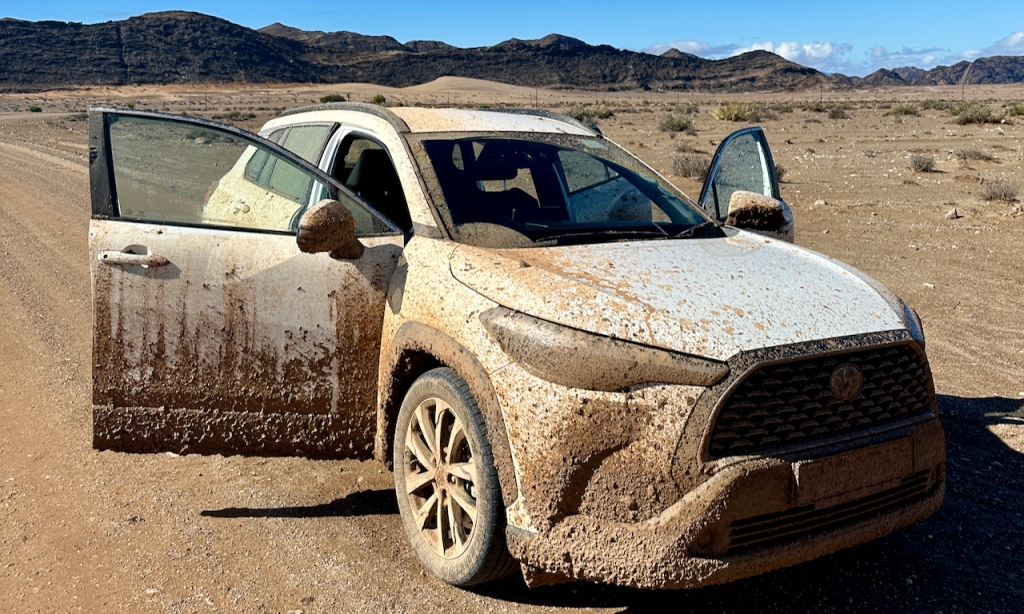
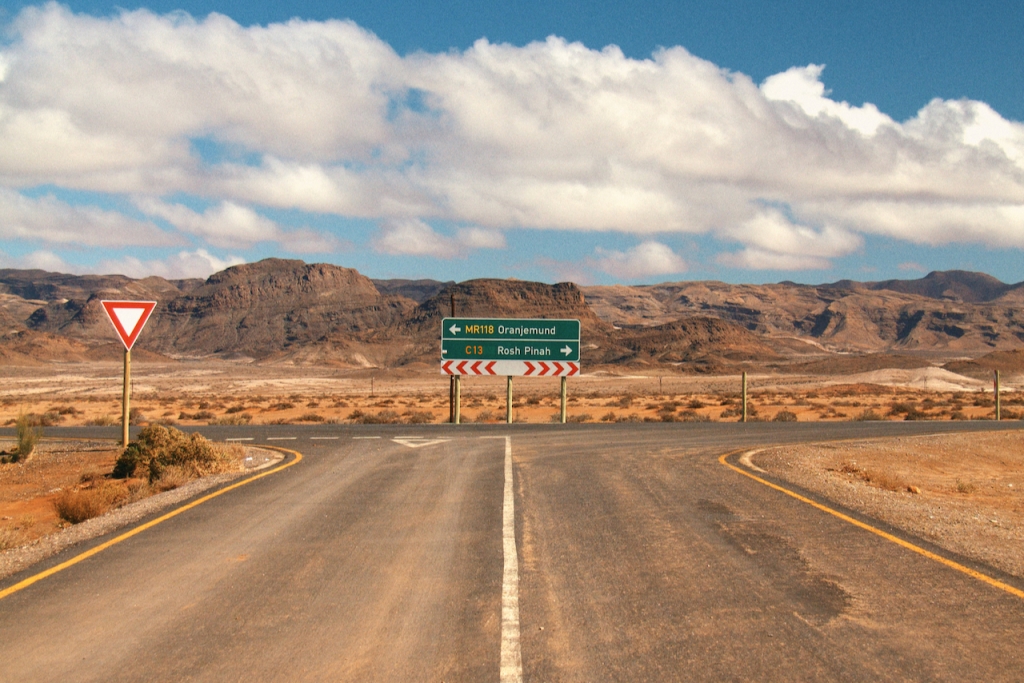
Finally, we emerged from the mud, proud of our small but effective Toyota rental car. Driving on a tarmac road never felt so good. In Rosh Pinah, a strategically situated carwash facility was doing excellent business. We queued up to get the mud rinsed off with the high-pressure hose and then continued north to Aus. The road ran straight through the Sperrgebiet, a national park famous for its diamond-rich soil. The landscape was stunning with wide open Namib desert, flanked by huge rounded mountains. We saw ostriches running around and spotted a springbok in the distance.
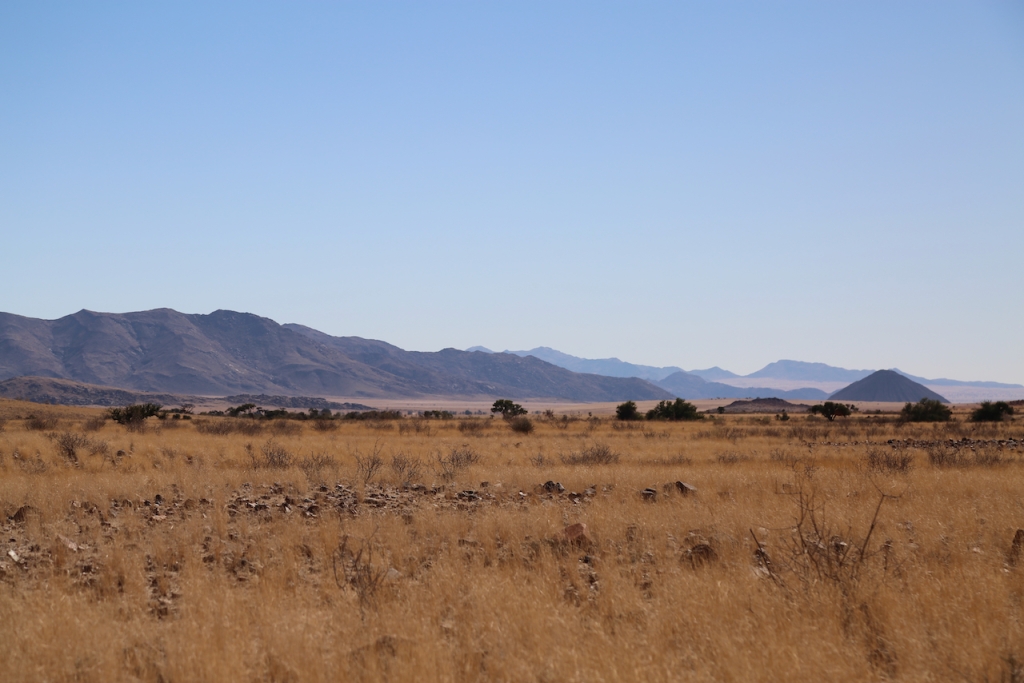
It was late afternoon as we arrived in Aus and we checked in at the Bahnhof Hotel, a well-run German establishment with a restaurant and a bar. Aus is a very small town with just one hotel and a petrol station and nothing else but desert for miles and miles around.
The next morning was a Friday. Before hitting the road again, we spoke with our lawyer to make sure they had received all the paperwork. He assured us everything was in progress and the appeal had been launched.
Our car miraculously had fixed itself overnight. As we were driving through the mud the day before, one after the other error message had appeared, informing us of everything that was no longer functional. After an overnight rest, everything seemed in order again and when Seathan turned the key over and started the engine all the error messages had disappeared. We filled up with petrol and started heading for Sesriem, our next stop.
It was another full day of driving. No mud this time but also no tarmac. The roads were gravel all the way and very uncomfortable. It was a miracle we arrived in Sesriem without puncturing a tyre.
The stunning scenery made up for the uncomfortable driving conditions. The vast landscape was changing constantly, as were the colours of the desert and the shape of the mountains. We saw many wild animals and very few other cars.
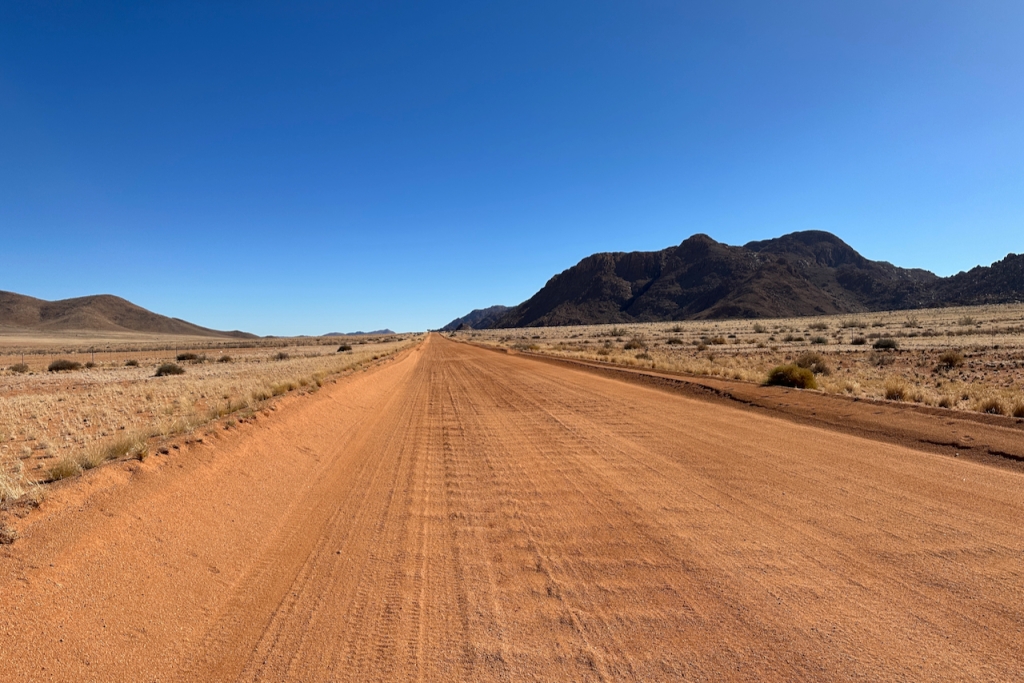
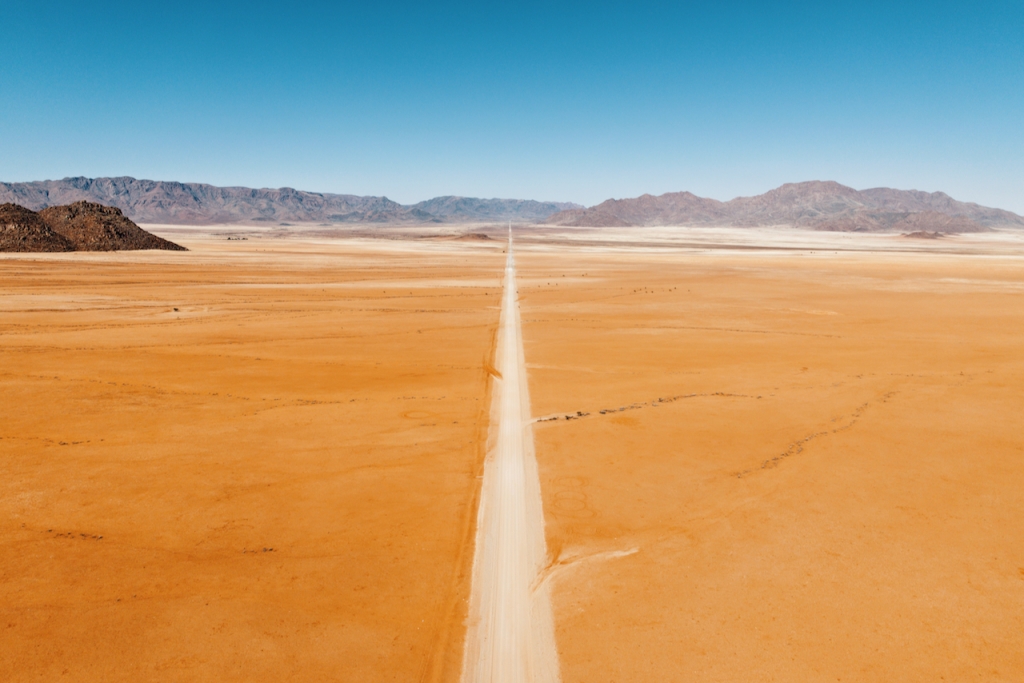
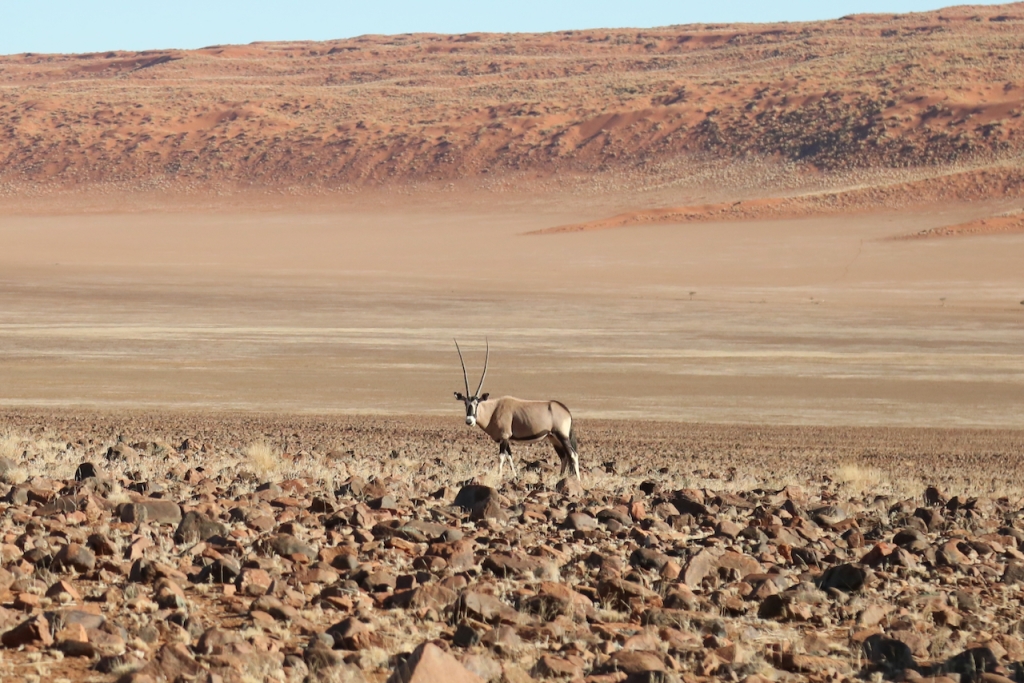

We arrived in Sesriem before dark and checked in at the Desert Quiver Camp, just in time for a quick sundowner by the pool, overlooking the desert. We had dinner in a nearby hotel where they served us grilled kudu, eland and springbok.
The nighttime sky was littered with sparkling stars and there was something magical about staying in the middle of the desert.
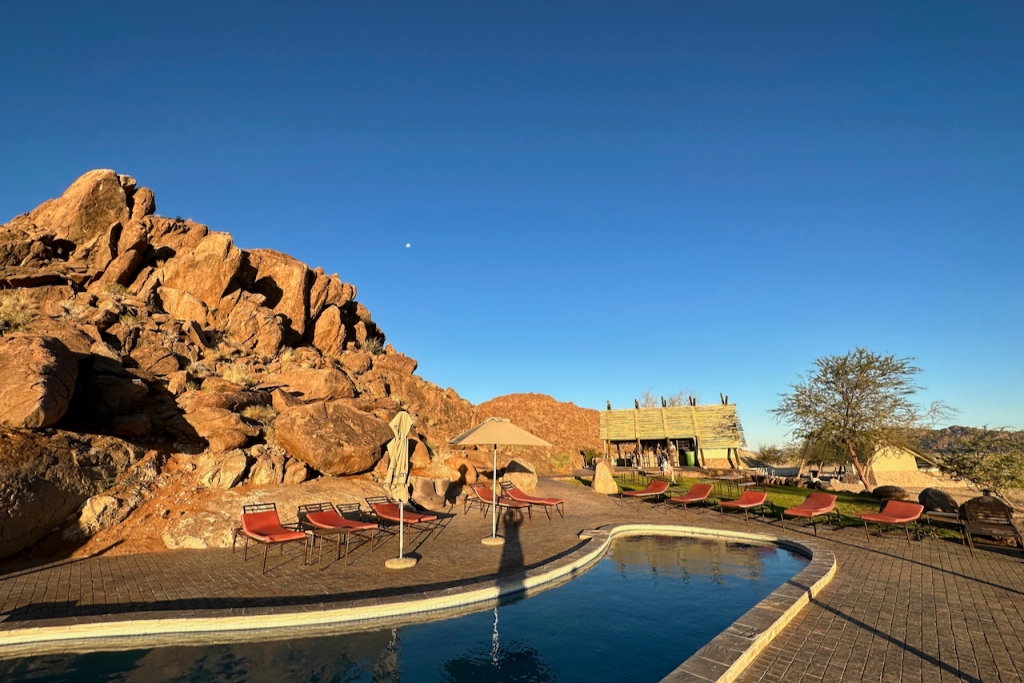


The main reason we had come to Sesriem was to visit the famous Sossusvlei red sand dunes, which we did the next morning. We drove through the entrance gate of the national park and into the dunes. The colours were stunning and we stopped at several dunes and raced each other to the top.
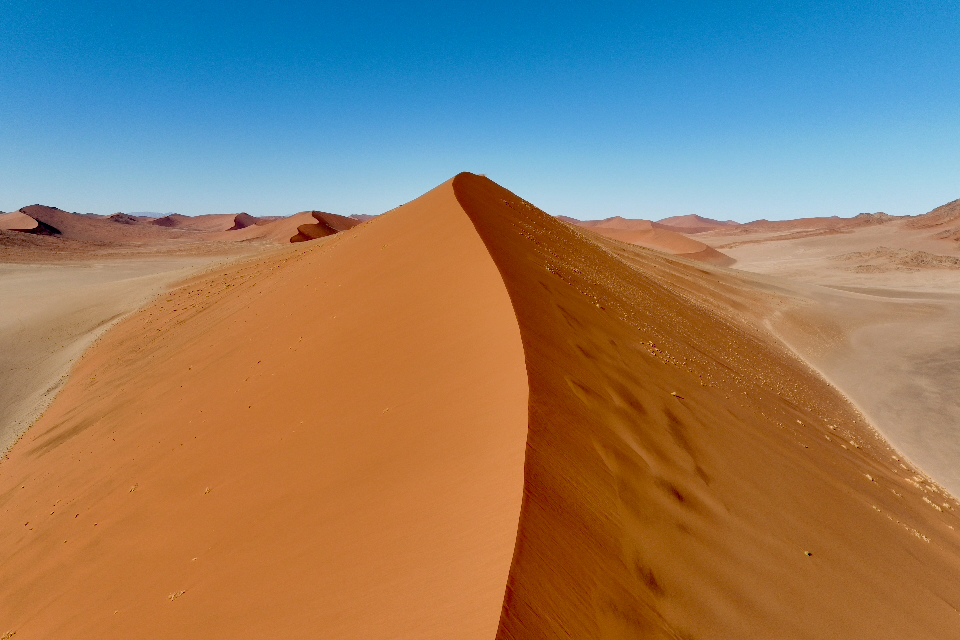
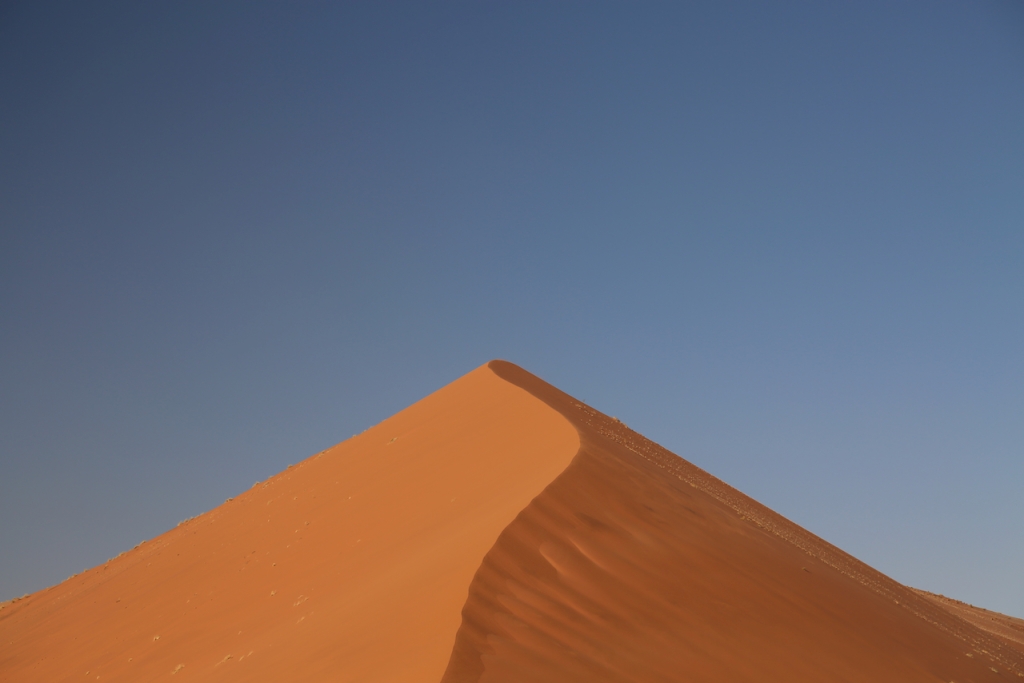
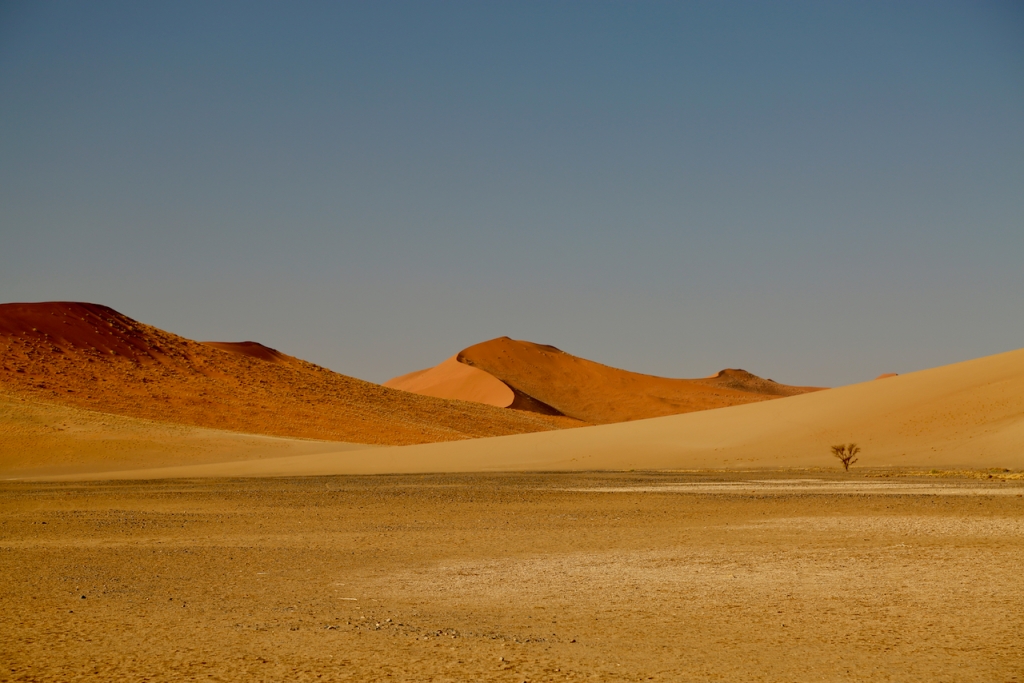
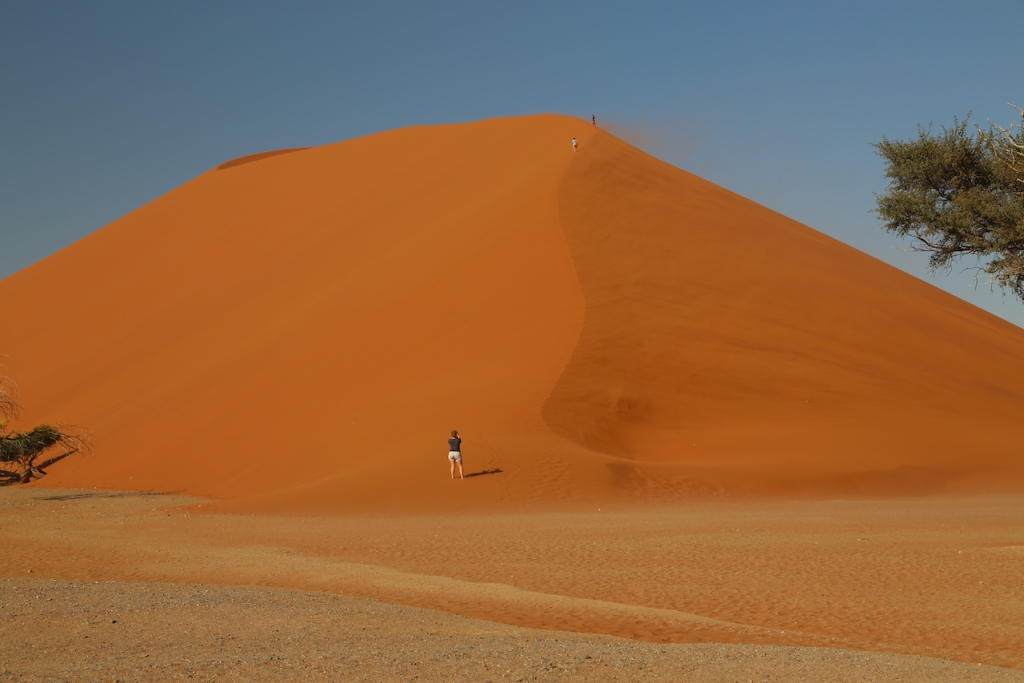
At the entrance gate we had also enquired about car repairs. We were a bit worried our rental car had been shaken around a lot and a few bits had even fallen off. Luckily there was a small car repair setup in the park with a ramp for emergency repairs. We got checked and everything seemed ok.
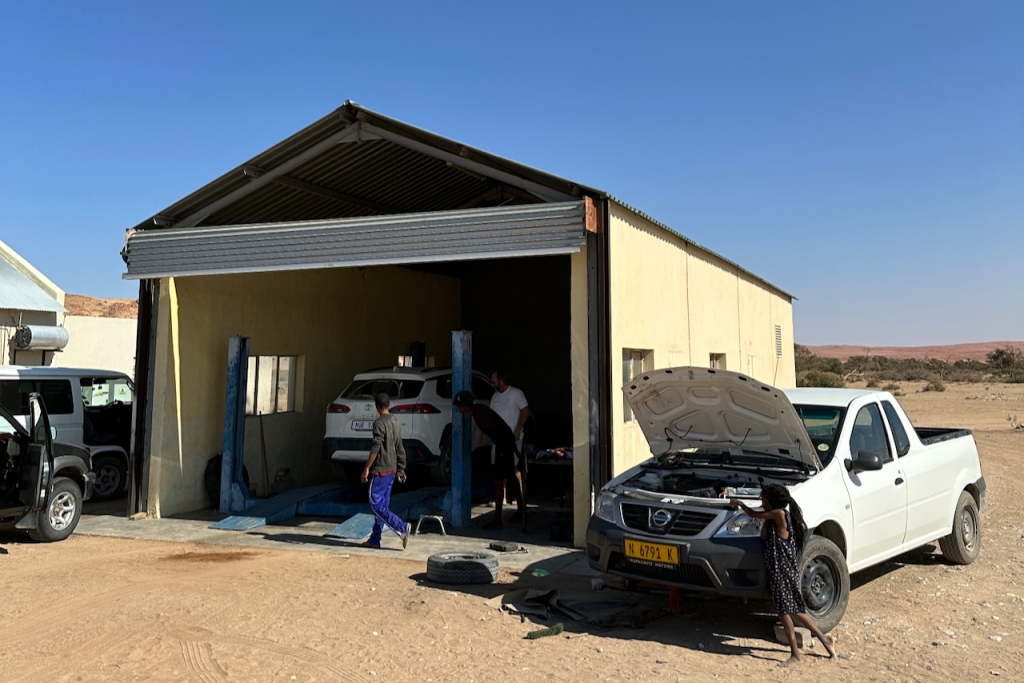
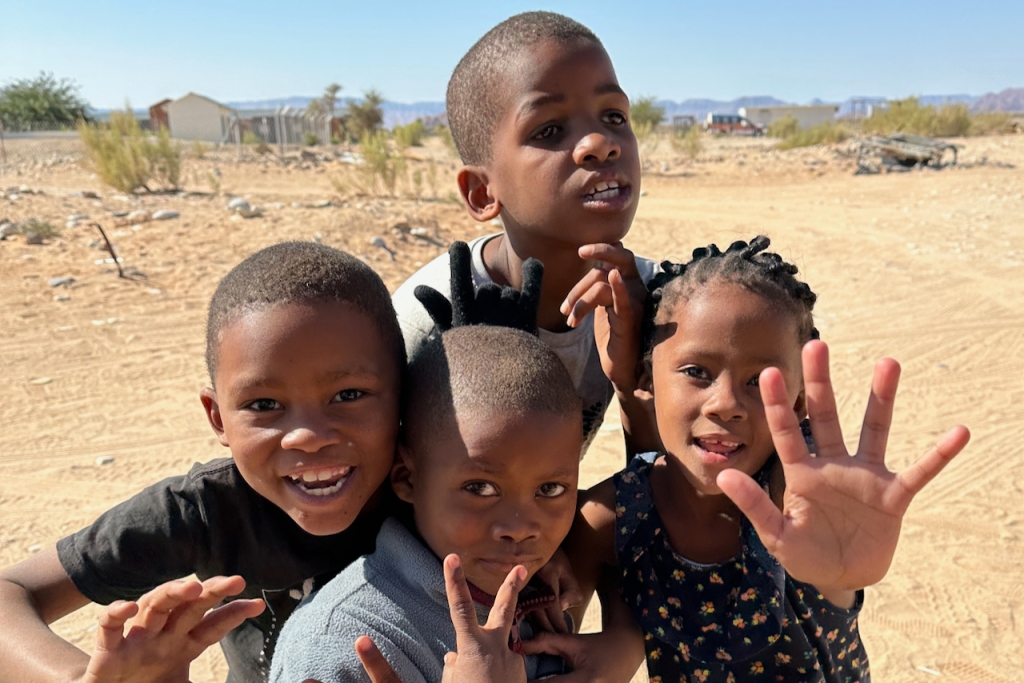
We continued north. There was no point rushing along these gravel roads. The landscape was ever changing and we saw oryx, springbok, ostriches and even zebras and jackals.
After another full day driving, we arrived in Duwisib. Duwisib was a working farm, with an old castle next to its grounds and set within beautiful countryside. We met Jochen, the owner, who joined us for dinner. There was another travelling family with teenagers staying at the campsite and we had a lovely evening with great conversation and a delicious home-cooked meal.
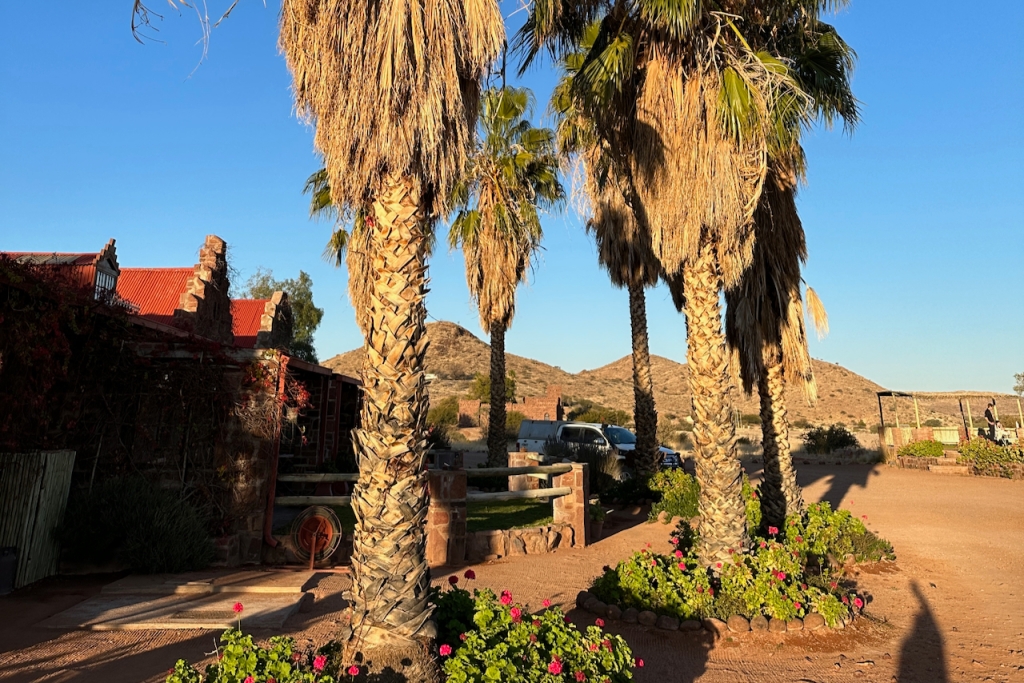
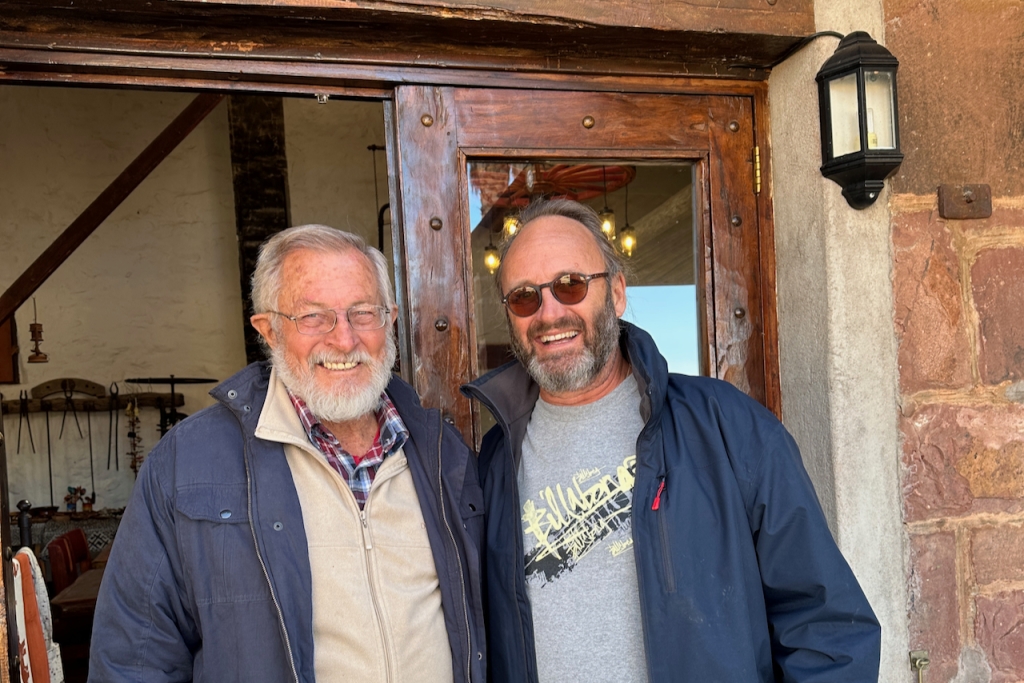
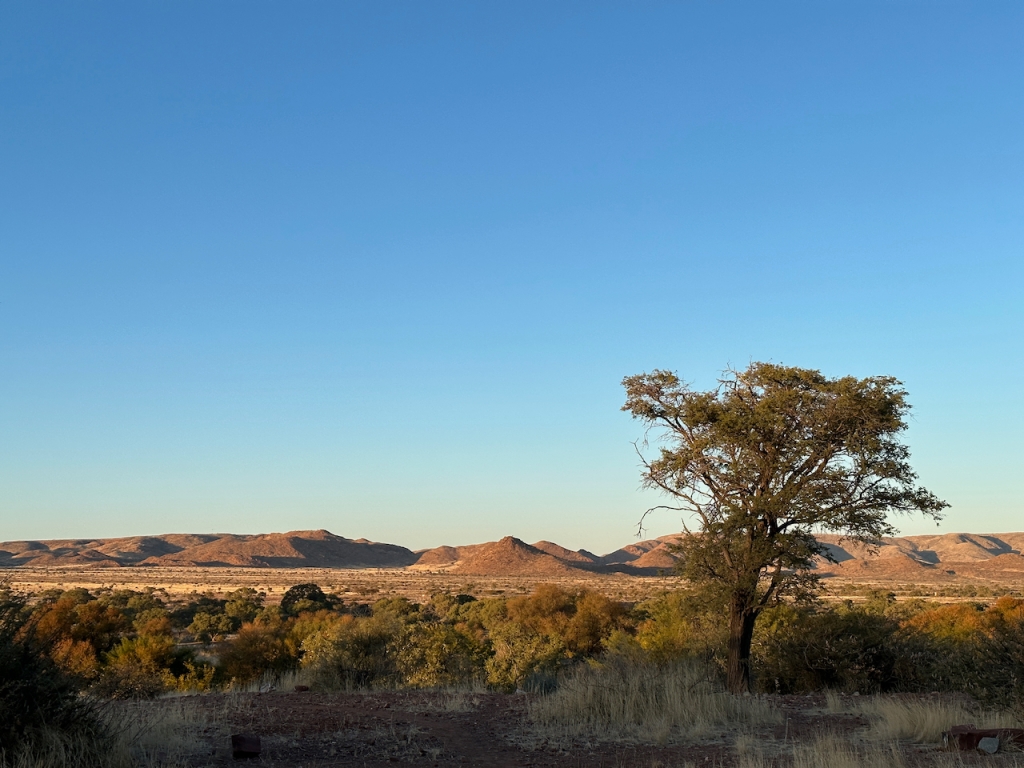
Of course we told our story about what happened at the border and how we had become ‘undesirable’. Everyone who heard about our situation was shocked. It was an upsetting time for us, not knowing if or when we would be allowed to go back home to Rehua. Our yachtie friends back in Cape Town had been amazing and came to the rescue as soon as they had heard about our predicament. They promised to look after Rehua, checking the lines regularly and making sure to run the engines once in a while. Unfortunately, the resident otter (nicknamed ‘Fearless Freddy’) had made himself at home in our cockpit and even brought his girlfriend onboard. They had pooped everywhere and made a mess of our outdoor space. Our friends had cleaned it all up and barricaded the aft deck with jerrycans to block future access.
After Duwisib we drove south to our final pre-arranged stop at Vastrap guestfarm near Grunau. We extended our stay with another day and then found alternative accommodation at another nearby guestfarm. It was high season and many places were fully booked.
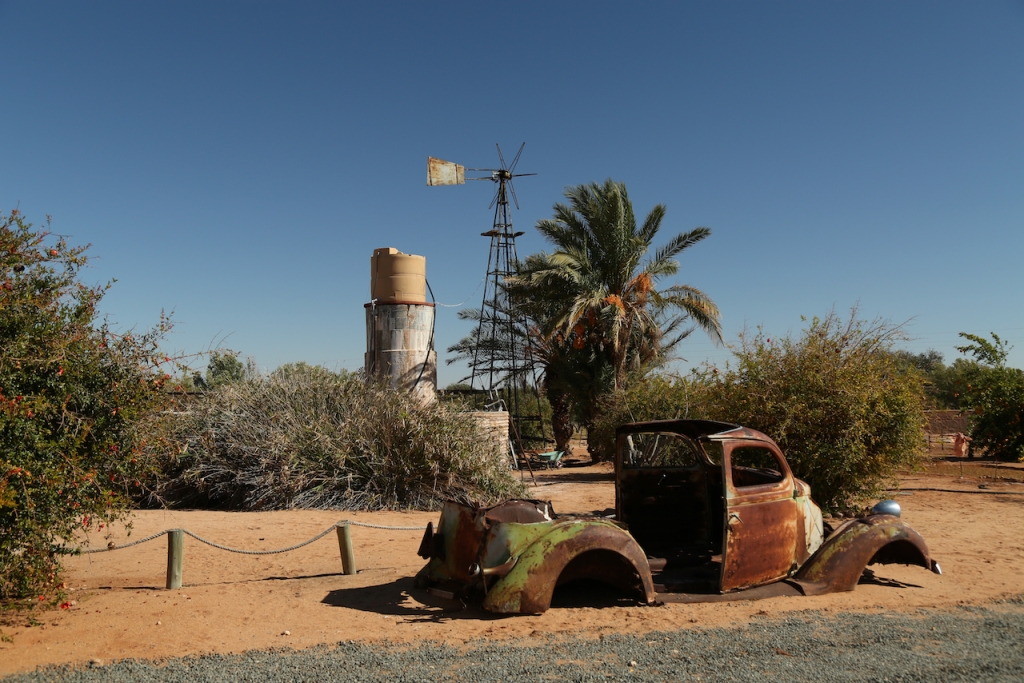

Our next stop, Savanna farm was set in 2,200 hectares and was an oasis of peace and quiet. Eric took us on his bi-weekly tour of the farm to check in with his cattle, sheep, goats and horses. We also joined him on a hunt for springbok which we had for dinner the next day and which was absolutely delicious. The star of the farm no doubt was the Belgian mastiff called Aura. She took us for daily walks around the farmland and the surrounding desert and slept outside our door at night.


After a week at Savanna farm, we decided it was time to move. We were keen to see the sea again and so we drove to Luderitz, where we had found relatively cheap accommodation. Luderitz is a diamond-rich town, with a strong German heritage. It sits squeezed between the desert and the sea. It’s a small town with not much happening. There are a few restaurants, a yacht club and two supermarkets. We were happy to have a base for a while and a small apartment to settle down in and get on with some schoolwork.
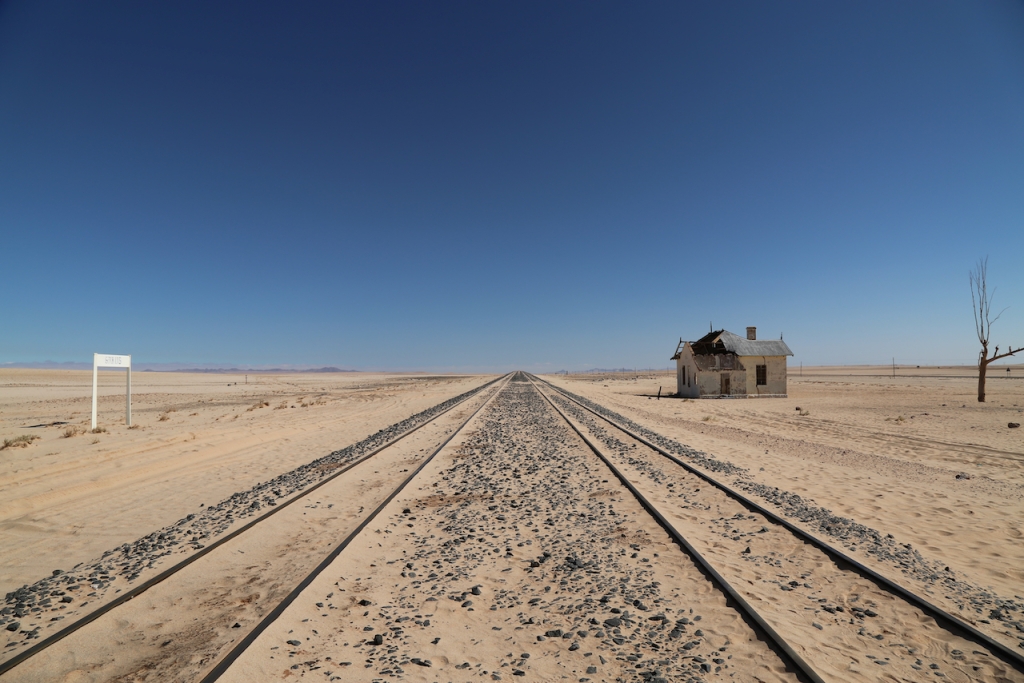
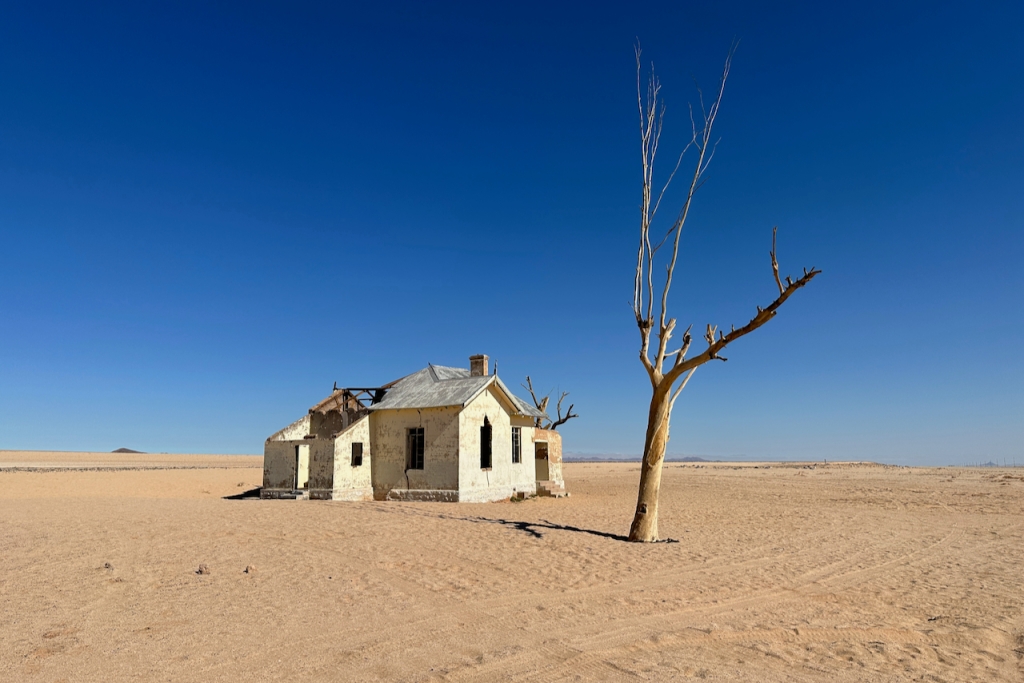
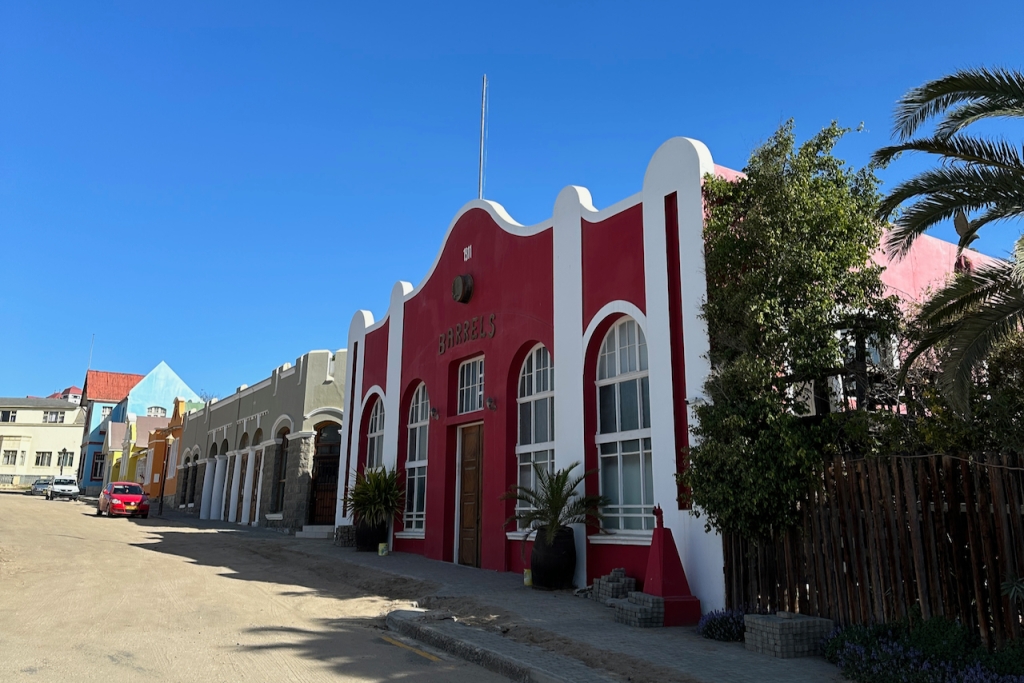


It was now two weeks since we launched the appeal and there was no news yet. The lawyers told us to be patient.
We extended the rental car for a third week. Our own car was still in the garage but there was some good news, it was finally fixed. Our friend Jason offered to drive it up and take the rental car back to Cape Town. The return trip from Cape Town to Luderitz was 2,500 km so this was a big favour. We asked our Australian yachtie neighbours to grab some items from the boat (schoolbooks, clothes, guitar, yoga mat) for Jason to bring up.
Jason and Ian arrived in Luderitz on Saturday morning and it was great to see a familiar face. We had a fun afternoon together in the Luderitz Yacht Club followed by a delicious dinner at the Portuguese seafood restaurant and the next morning they drove back south.
We decided to name our car ‘Gloria’ and begged her not to let us down ever again. We took her for a drive around the peninsula, to the Diaz Point Lighthouse and through the restricted diamond-area.


Our lawyers warned us it could still take several weeks before the paperwork would be ready. They advised us to rent week by week and not to commit to anything longer term, in case the uplift came through suddenly.
We made plans to move to another town called Swakopmund. We had heard from several people that it was more vibrant than Luderitz and that there was opportunity for surfing along the coastline up there, something the kids were keen to do.
We split the journey from Luderitz to Swakopmund up into two days and stopped overnight at Maltahohe. It was tough driving on gravel but our car was definitely a whole lot more comfortable than the little rental car.
Again, the landscape kept changing, from desert to canyon. We crossed dried up rivers, drove through enormous valleys, entered mountain passes and then reached the desert again and drove alongside the never-ending sand dunes until we finally saw the sparkling blue ocean when we reached Walvis Bay.
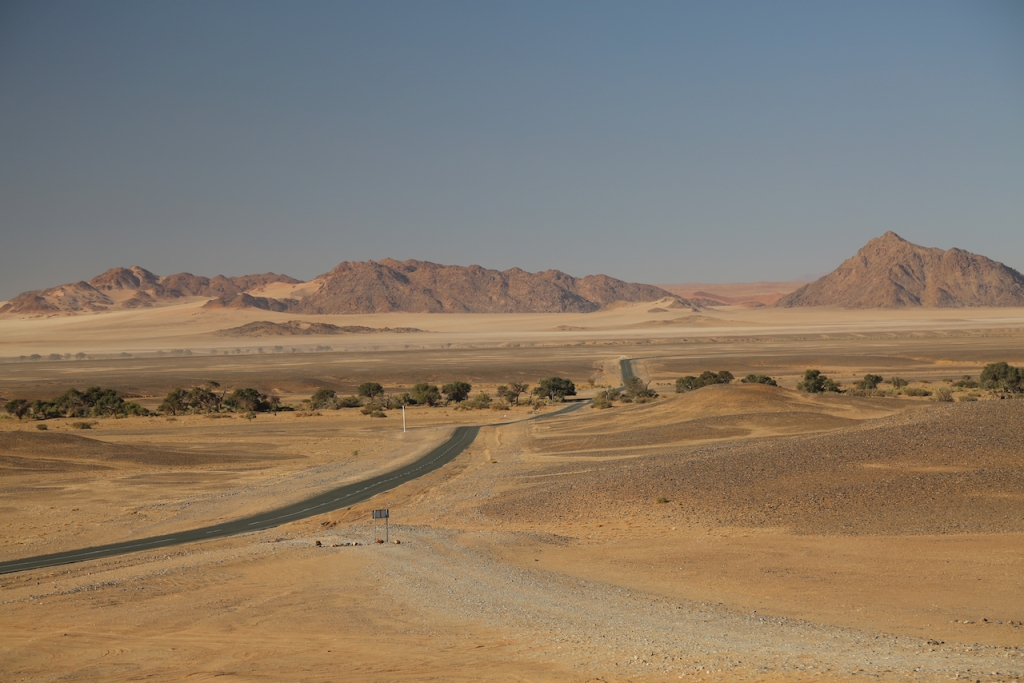
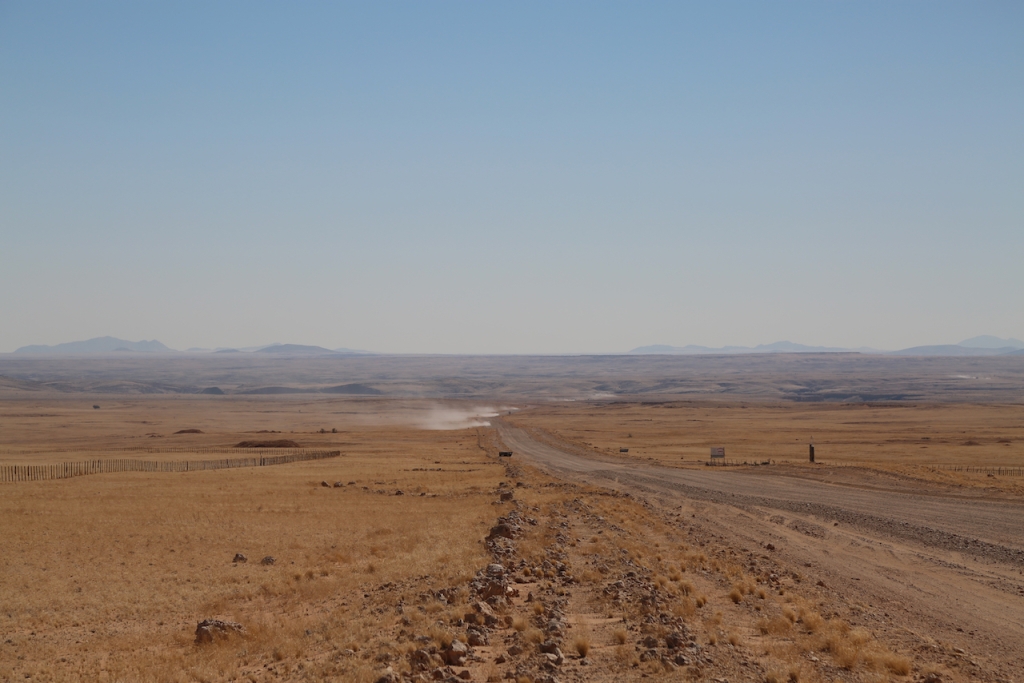

Swakopmund is a cute seaside resort town with a predominantly German and Afrikaans speaking community. A lot of Namibians come on holiday here during the summer months and during winter it is a popular stop for European and other foreigners who are doing a tour of Namibia.
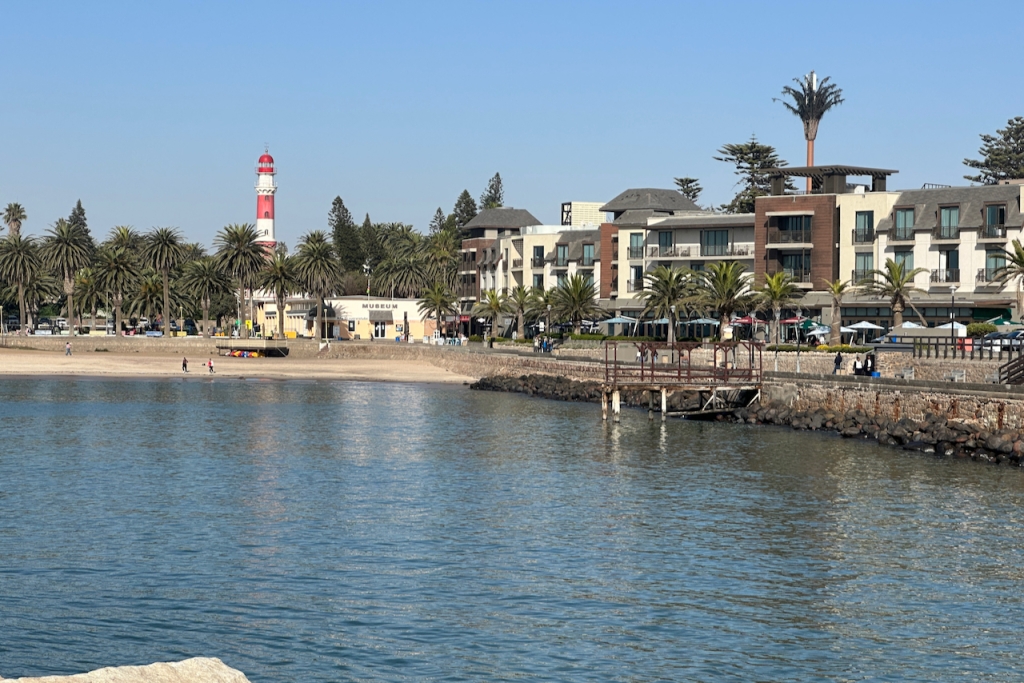
There’s lots of tourist activities including desert tours, sandboarding, quad-biking and (what we were interested in) surfing. The Skeleton Coast is famous for its huge waves during the winter months so we were here exactly at the right time of the year.

Finding rental accommodation was not that easy, many places were booked out and we could only get an Airbnb for a few days at a time, meaning we had to move around quite a bit.
We made friends with the owners of the local surf school called ‘Salty Jackal’ and learned where the best surf spots were along the Skeleton Coast.
We drove to ‘Gunns’, a surf spot on Langestrand, roughly halfway between Walvis Bay and Swakopmund. The waves were rolling in and the boys enjoyed getting in the water, even though it was quite chilly. As Seathan and I were watching them from the beach, we saw a pod of dolphins approach and join them in the surf. Magical moments.
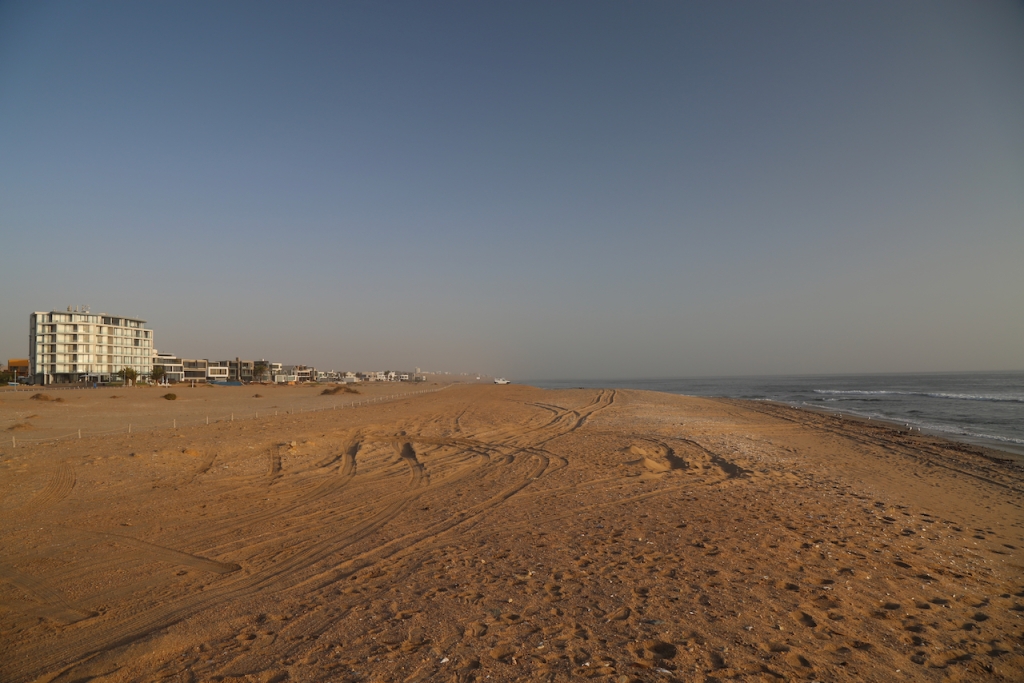
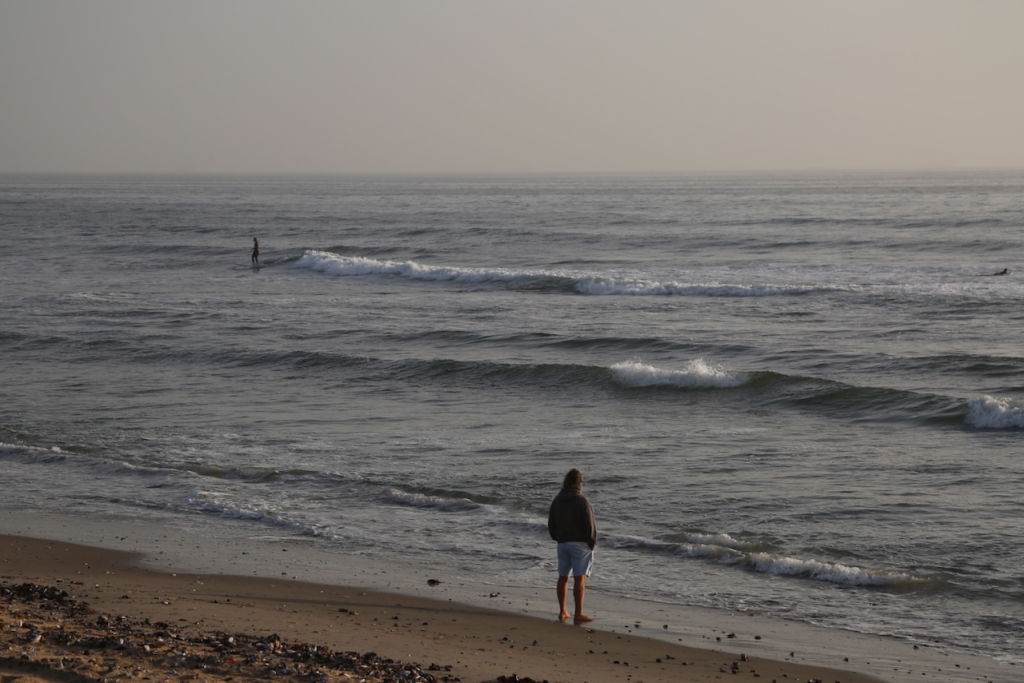
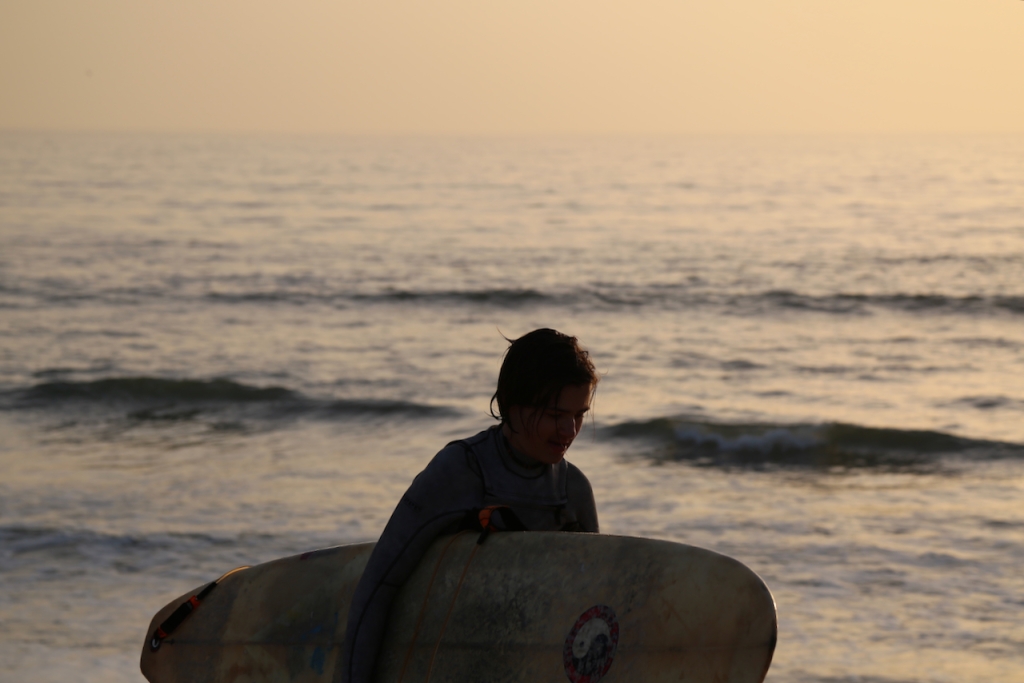
Another week went past and still no news from the Department of Home Affairs. The lawyers assured us that our case was in progress and that it was being fast-tracked. They were following up daily and would let us know as soon as there was any news.
On Sunday we took a drive into the desert to an oasis called ‘Goanikontes’. We drove through the ‘Moon Valley’ and the landscape was spectacular. Several movies had been filmed here and it really looked like how one would imagine the moon to be.
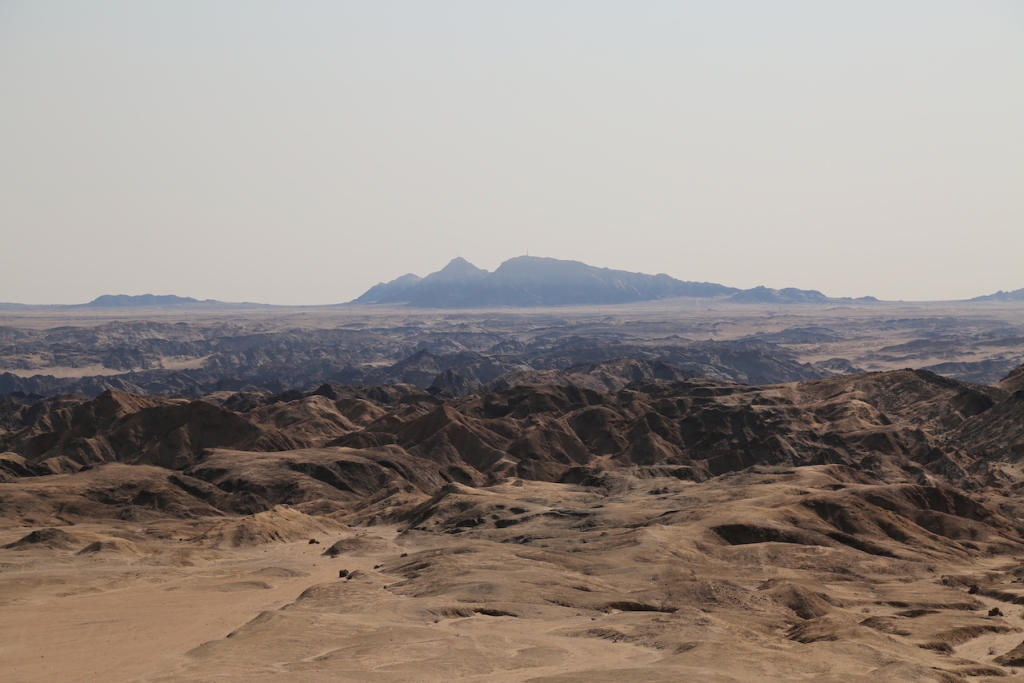
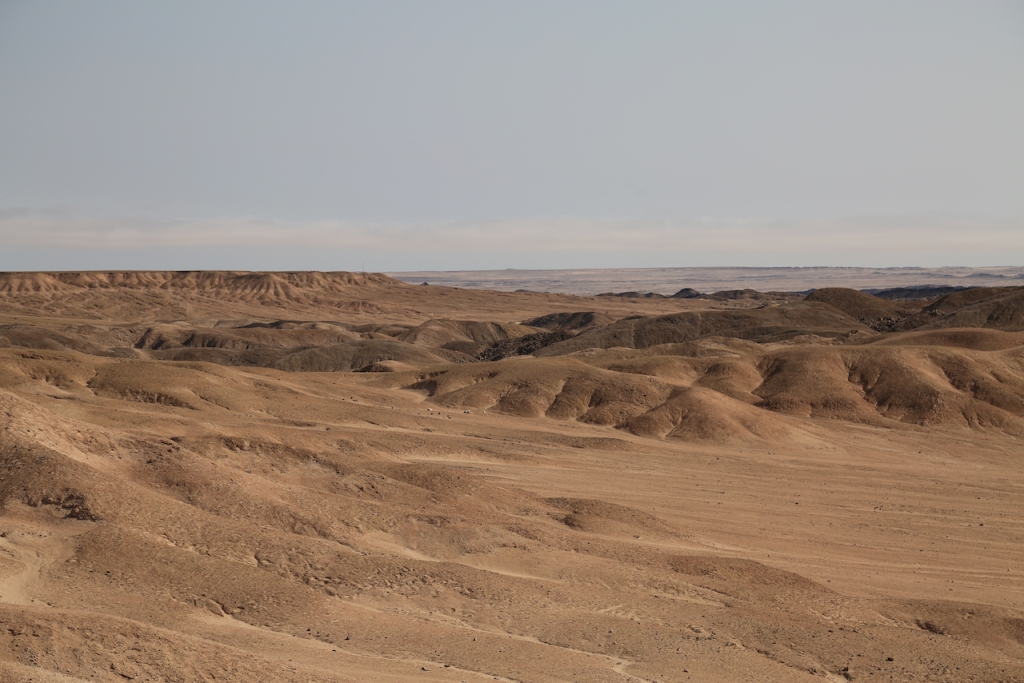
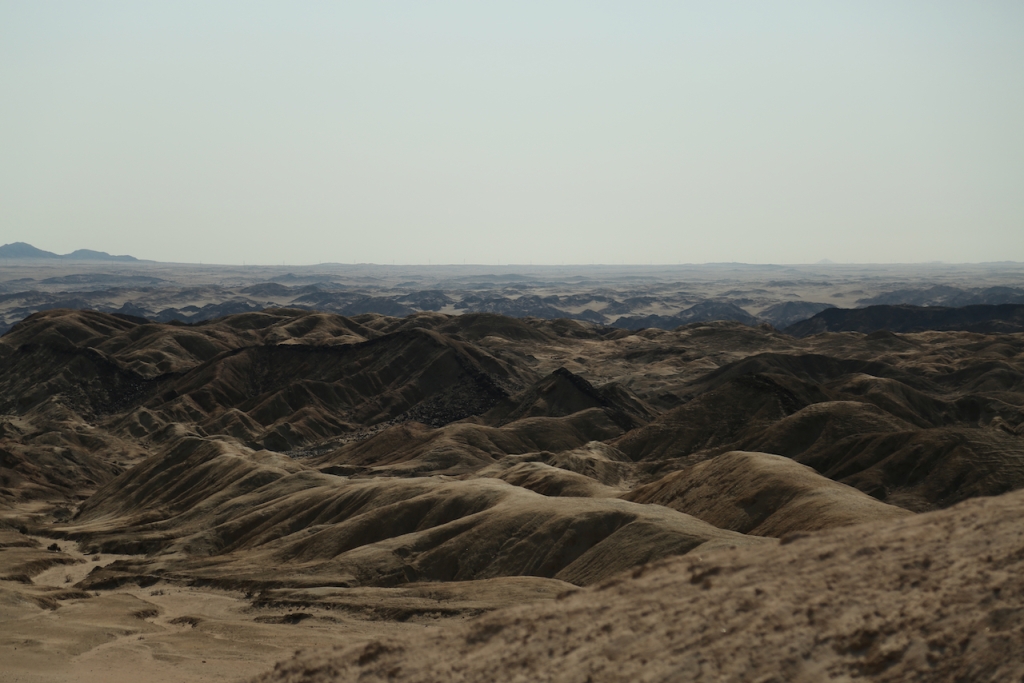
Another week came and went and we had to find alternative accommodation again. Prices were high, driven up by the many European tourists that like to tour Namibia during July and August.
The boys kept busy with schoolwork and surfing. By the end of the week the surf was pumping and there were rumours that the famous Skeleton Bay wave would be making an appearance. This wave was ‘discovered’ in 2008 and it is the longest barrel in the world. It only appears a few times per year and we were lucky to be able to witness it.
On Monday morning we got up at 5am and drove the 40 kilometres to Walvis Bay and followed the off-road track we had been shown by our surfing buddies from Salty Jackal the week before. Skeleton Bay (also known locally as ‘Donkey Bay’) is hard to reach across marshland, muddy sand and a narrow spit of sand.
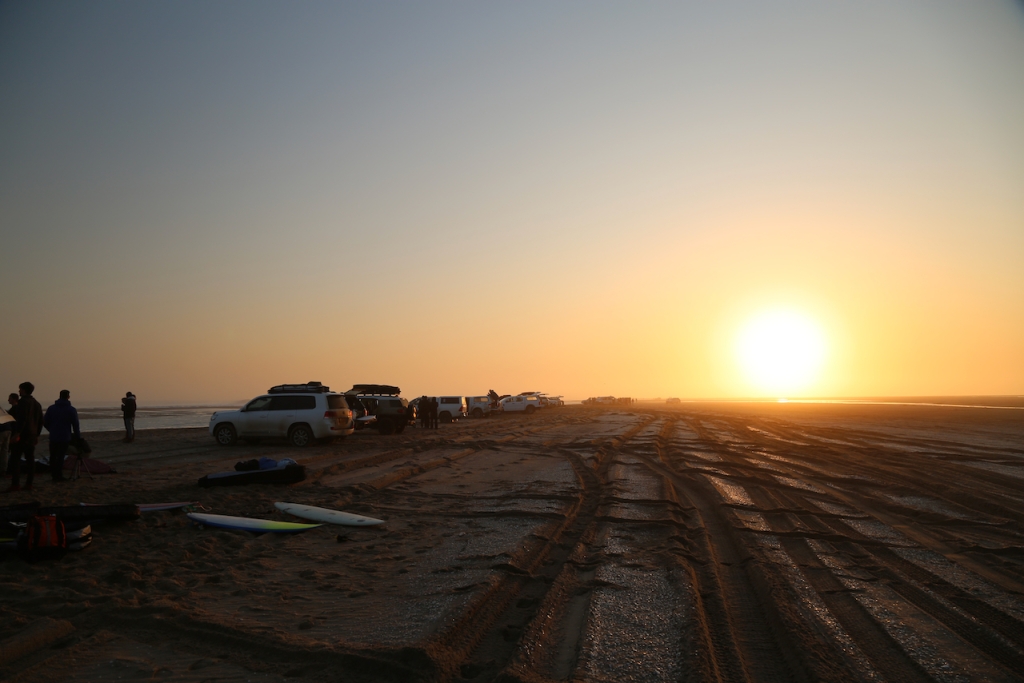
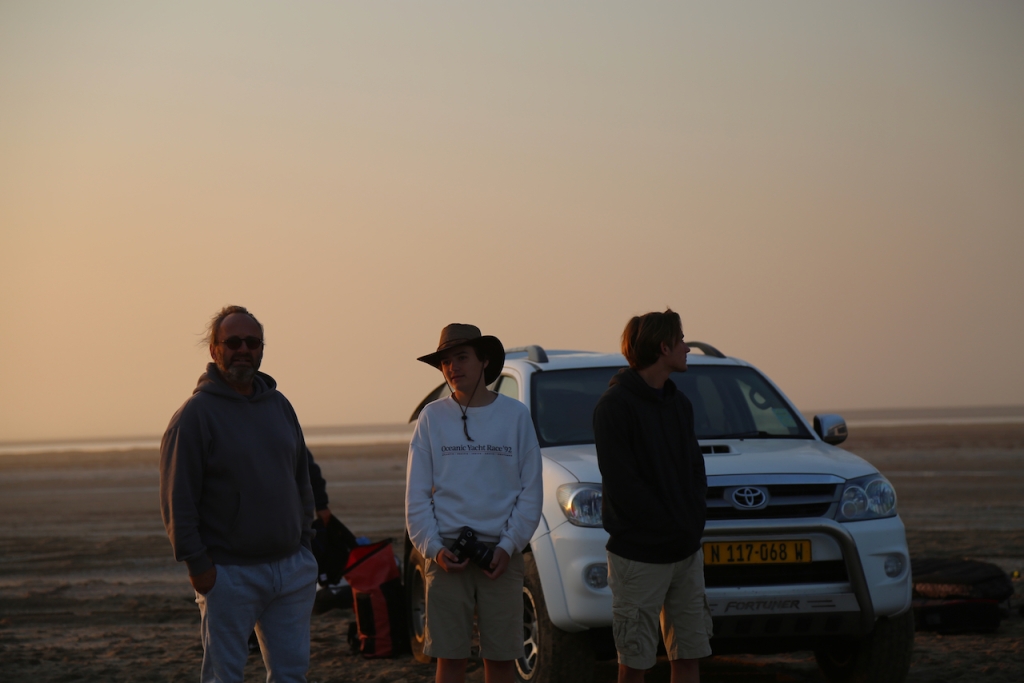

We reached Donkey Bay just before sunrise and we weren’t the first ones to arrive. Surfers from all over the world had descended on Walvis Bay, keen to ride this legendary and very rare wave. It’s the longest barrel and one of the cleanest and most exciting point breaks ever. The boys met many surfing legends including Kelly Slater, Jamie O’Brien, the Florence brothers and Koa Smith. Best of all, Tyrii even got to surf the famous Donkey Bay wave.
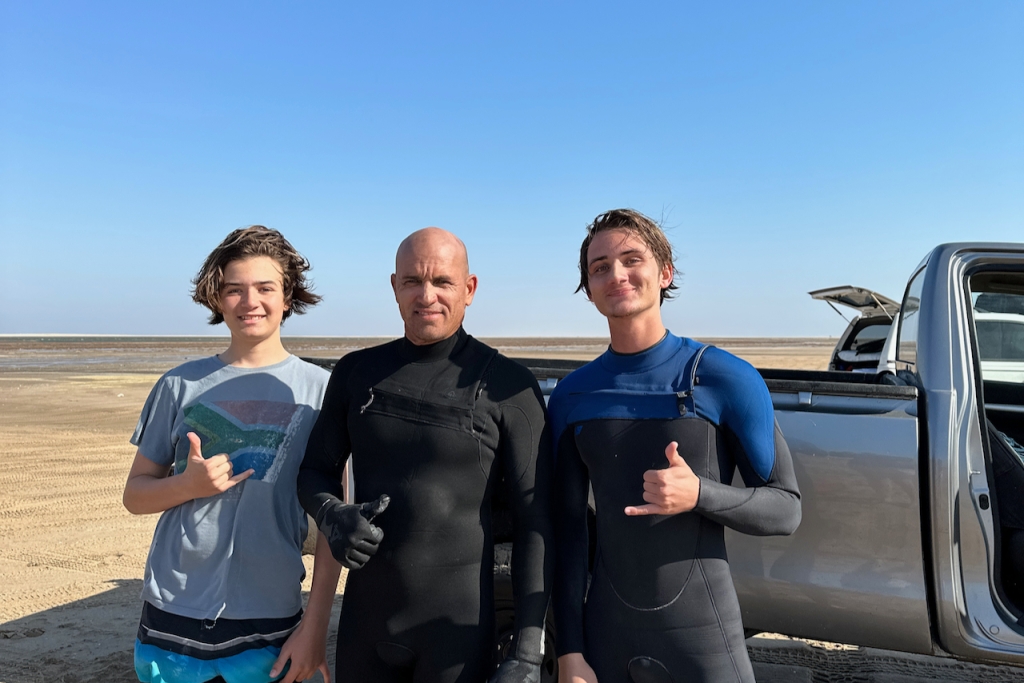
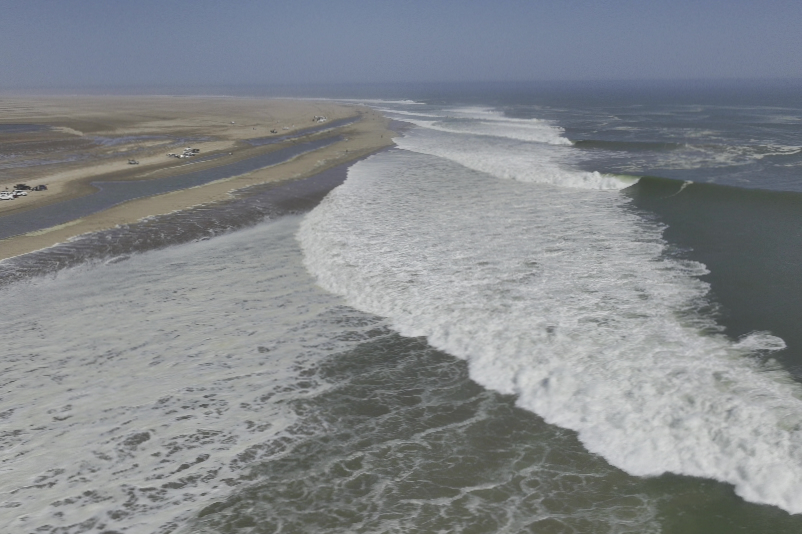
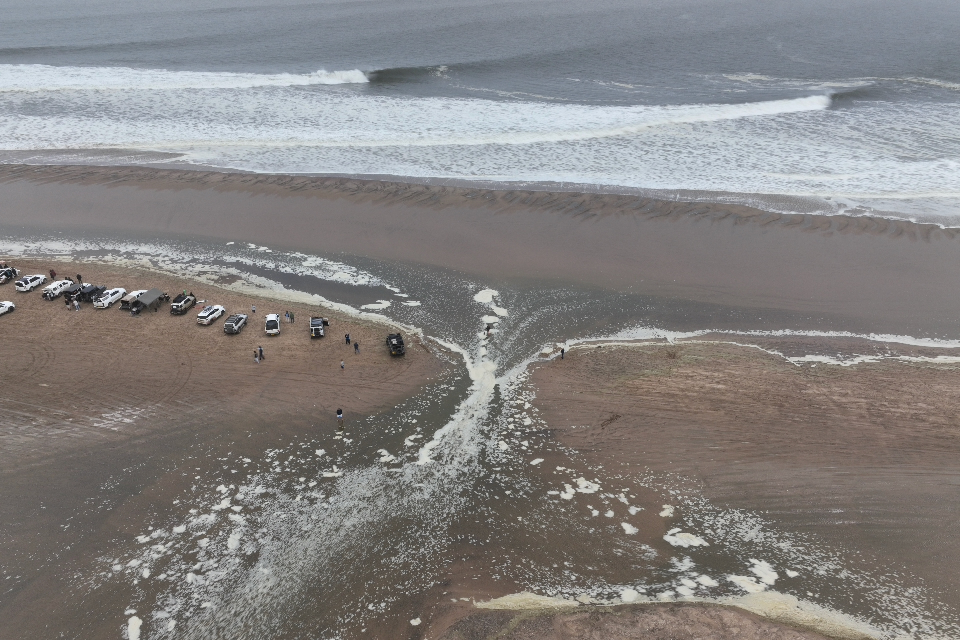
The weeks kept passing by. It was now eight weeks since we had logged our appeal. On Wednesday afternoon, our lawyer phoned us and we thought that finally, this was the call to tell us we were allowed to return home. Instead he asked:
“Did you by any chance make calls to Home Affairs and harass them?”
We assured him we didn’t. We had been advised from the start to let the lawyers handle everything and we had done as told. But now the case officer at Home Affairs was claiming that a guy with a white beard who owns a boat had been calling them and harassing them and therefore they had put our case on hold.
This was beyond belief. Maybe they had confused us with someone else? It was just the weirdest piece of news and it made us very unsettled. We had been nothing but patient for eight weeks now.
The next morning, our attorney finally got hold of the case officer at Home Affairs and assured him that we never made any direct calls. The response was very brief:
“Oh…”
We were then told that our case should be finalised soon and that it was just a matter of getting it through the final hurdle.
“I’ve got a feeling it will come through tomorrow,” our lawyer said.
We started planning our return route and got seriously exited about being reunited with Rehua.
The next day was Friday and unfortunately nothing came through. We were faced with yet one more long weekend with no hope of anything coming through on Saturday or Sunday.
“We should definitely get something through on Monday or Tuesday, “ our lawyer said.
We tried to stay positive. One more trip to Langestrand to go surfing. One more meal out at our favourite pizzeria in Swakopmund. On Friday evening we took a drive into the Namib desert and admired the endless stretch of beautifully shaped sand dunes. Being surrounded by all that natural beauty definitely lifted our spirits .


The next week came and went. Nothing happened. On Thursday we were told our Airbnb apartment was double booked. We moved out and found somewhere else. The dreaded weekend was looming ahead once more.
What could we do? We started talking about taking the Minister of Home Affairs to court. Legal action was the logical next step. If only they would have given us a fine. It would have been a lot cheaper than nine weeks of expensive holiday accommodation, legal fees and other out-of-pocket expenses. Meanwhile we were also paying marina fees in Cape Town.
And then it was Friday AGAIN. We decided it was time for a change of scenery and on Sunday we drove to Windhoek, a four-hour drive east from Swakopmund.
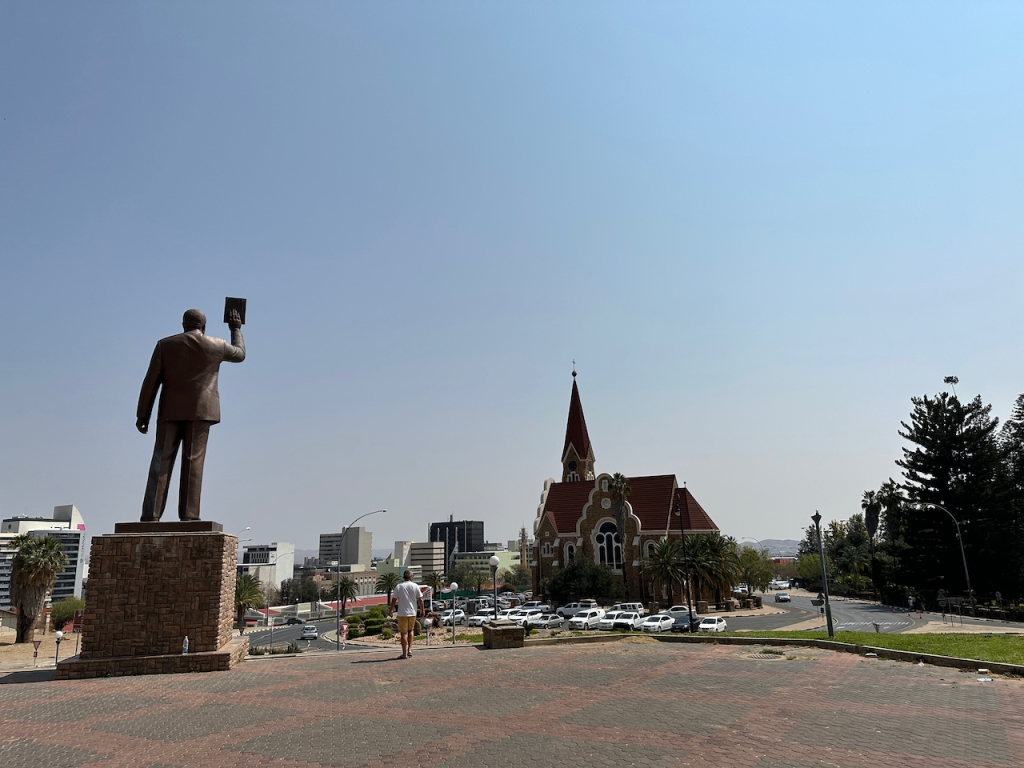
We had been put in touch with Graeme, a distant family connection who lives in Windhoek with his wife and kids. When we spoke on the phone, Graeme offered to help in any way he could. He suggested we could spend a few nights with them in Windhoek which we had gratefully accepted. We had lunch together and immediately hit it off. Graeme runs a safari business and tailors holidays in Namibia and can arrange off-road vehicles and organise mountain biking trips. He’s lived in Namibia all his life and knows the country inside out. If anyone is planning a trip to Namibia, make sure to let us know so that we can put you in touch with him.
We had hoped the paperwork would have come through while we were in Windhoek but unfortunately it didn’t. Graeme and Marli very generously offered us their holiday home at Lake Oanob for the next few days and on Tuesday morning we drove the 90 kilometres south to Rohoboth.
Lake Oanob was a haven of peace and quiet. Set within a nature reserve of 6,200 hectares in the beautiful Hardap region, it was home to a variety of game including giraffe, zebra, oryx, gnu, impala, springbok, blesbok, waterbuck, … Thatched roof holiday houses blended in perfectly with nature and were dotted along the lake. It was a relaxing place to stay and the temperatures were much warmer than what we had gotten used to in Swakopmund.



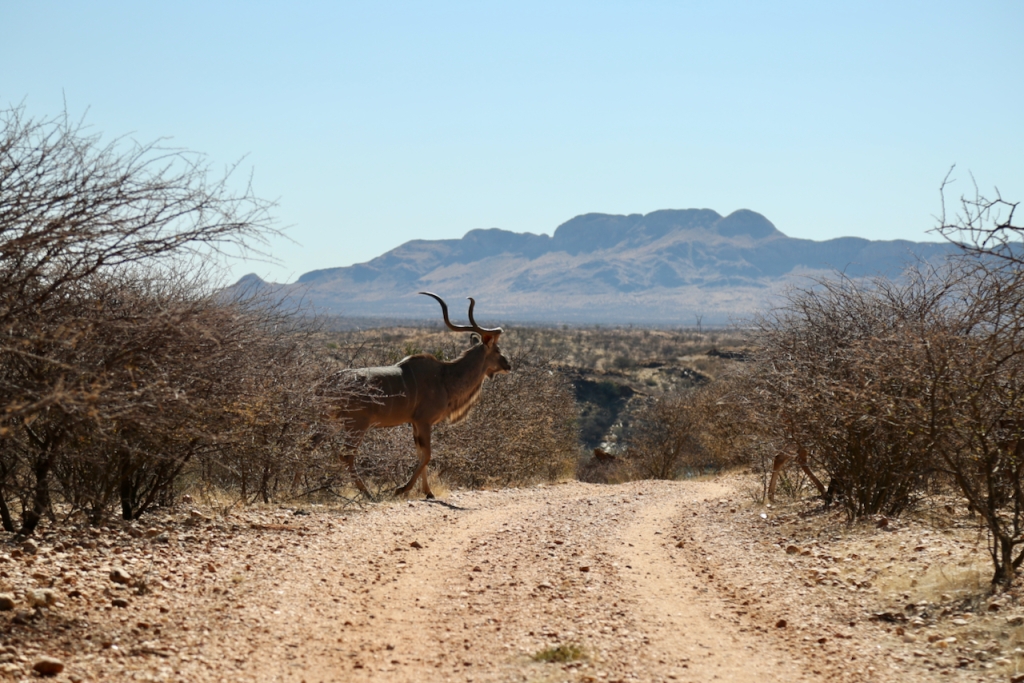
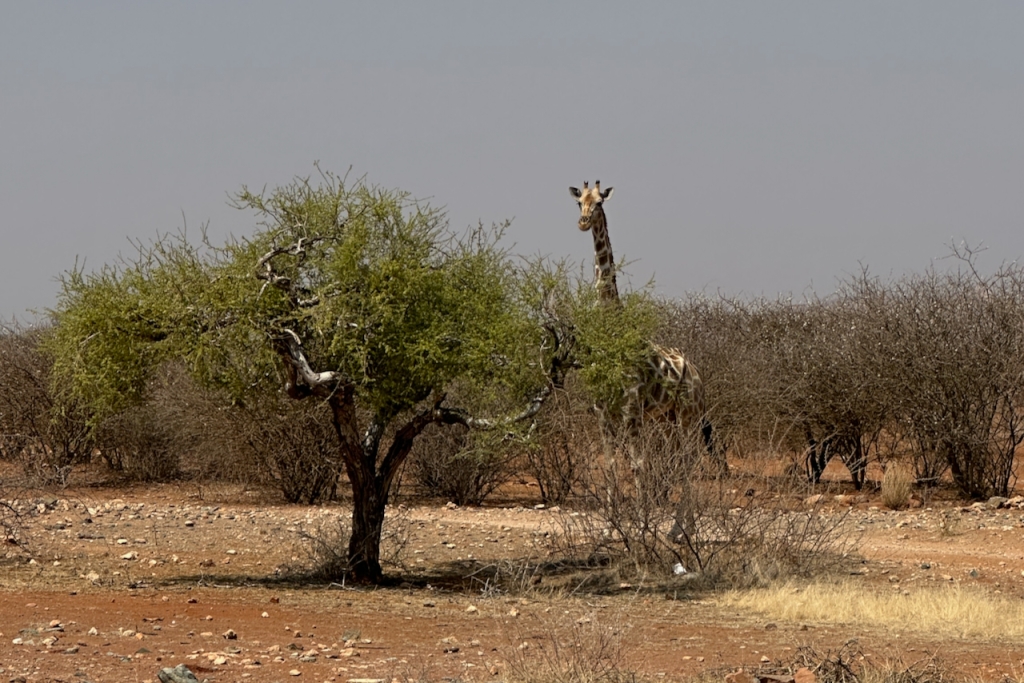
Our lawyer called us on Tuesday evening to inform us that there had been some progress. They had spoken with senior officers at Home Affairs and the paperwork was ready to be signed. Unfortunately, nothing further happened the remainder of the week and by Friday afternoon we could feel the dreaded weekend looming ahead of us, yet again.
The weekend came and went and another Monday morning brought refreshed hope. Luckily we could stay at Lake Oanob for a little while longer but the issue was now that our Namibian visas were running out of time soon and an extension was impossible, we were told.
We tried to enjoy our tranquil and peaceful surroundings at Lake Oanob. The dam was only 50% filled as it hadn’t rained for over a year but there was still plenty of water for canoeing and swimming. We admired the wildlife especially the giraffes and the baboons and also – our favourite – a very large great white pelican who lazily paddled around the lake all day, looking for fish. The weather was a balmy 30 degrees Celsius most days and the air was cool and refreshing at night.
Another Monday morning but as per the previous weeks, nothing progressed on the first day of the week. On Thursday we finally got some good news: the Director General had signed the paperwork. Unfortunately, the Minister himself still had to sign too. All we could do was hope he would be in the office over the next few days.
On Friday, more good news: the Minister had signed. We were told the next step now was to capture the uplifting of our ban in the ‘Movement Control System’. It was unclear how long this process would take. We felt confident our ordeal was almost over but then another long weekend of waiting followed and another Monday where nothing happened and we received no further news.
Finally, on Tuesday afternoon, we received the much anticipated phone call from our lawyer. The letters were ready and on their way to us in an email. All we had to do was print them off and present them at the border control and we would be allowed back in the country. Our relief was enormous. We immediately started packing our belongings and less than an hour later we were in the car, driving south.
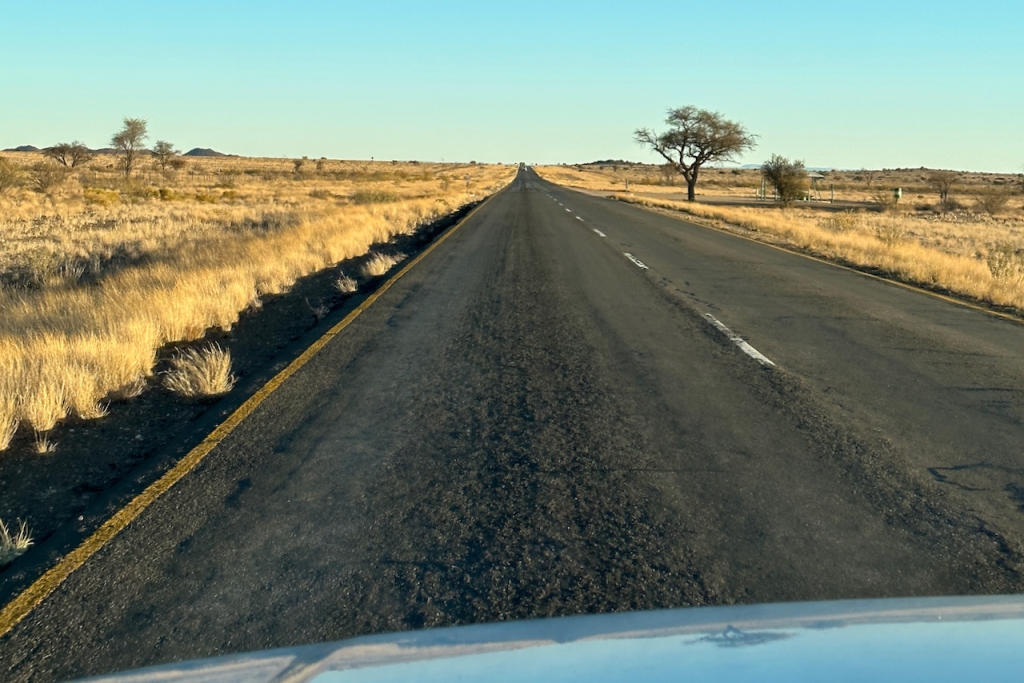
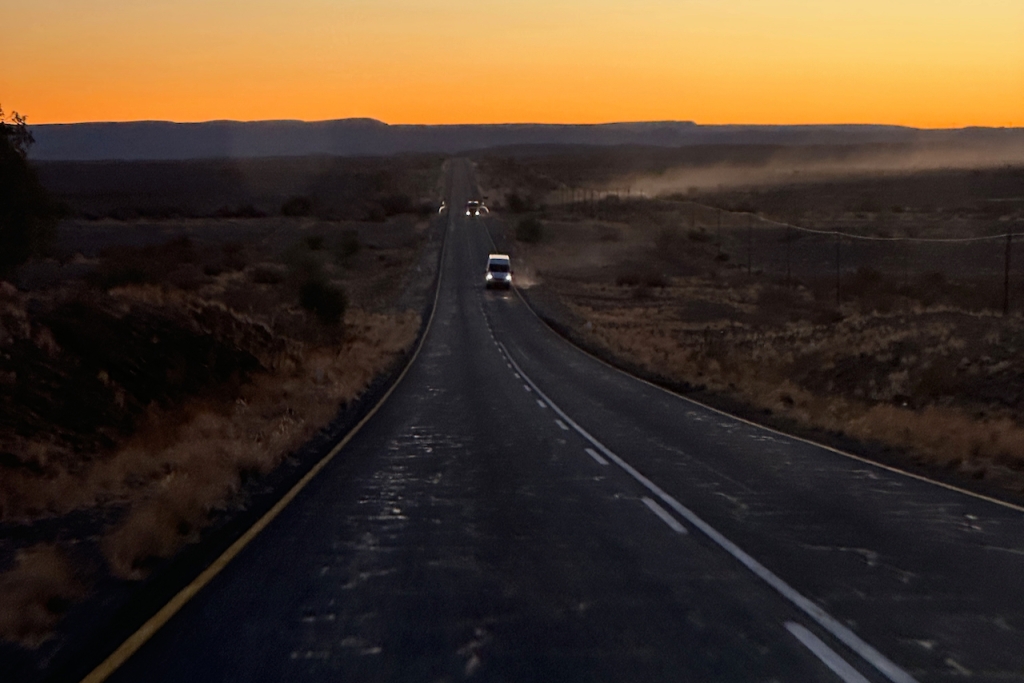
We drove six hours and arrived at the Bahnhof Hotel in Aus just before nine o’clock. We ordered some food just before the kitchen closed and went to bed, ready for an early start the next day. From Aus, it was another three-hour drive to the border near Oranjemund. We admired the stunning Namibian scenery as we drove through the Tsau Khaeb National Park, also know as the Sperrgebiet. Spring had begun and the desert was blooming, an incredibly colourful and stunning display of colours which was a feast for our eyes.
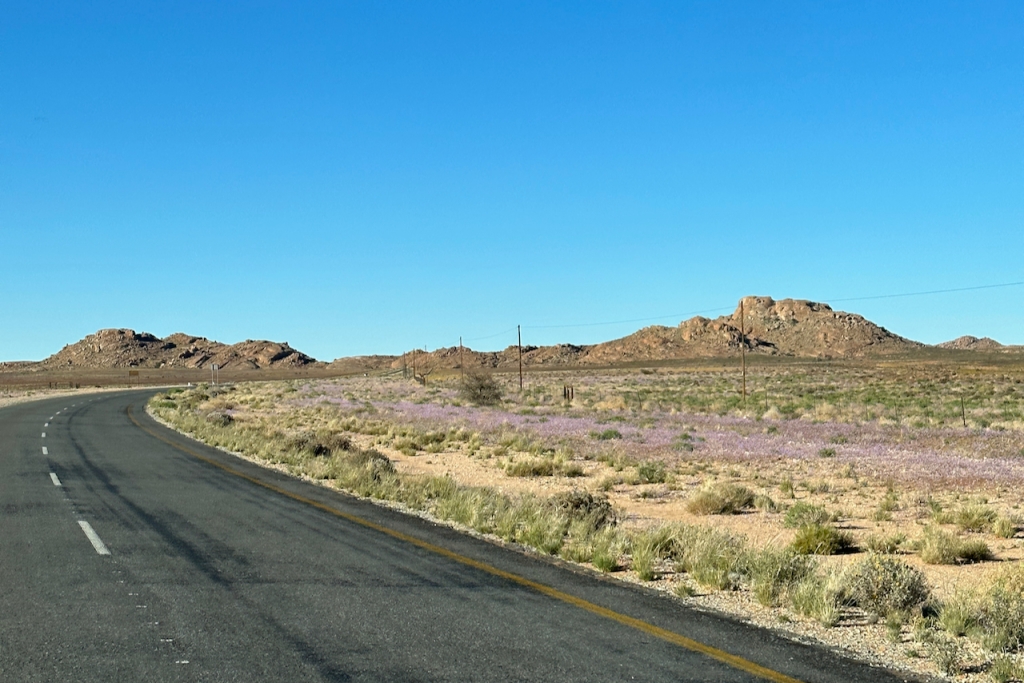

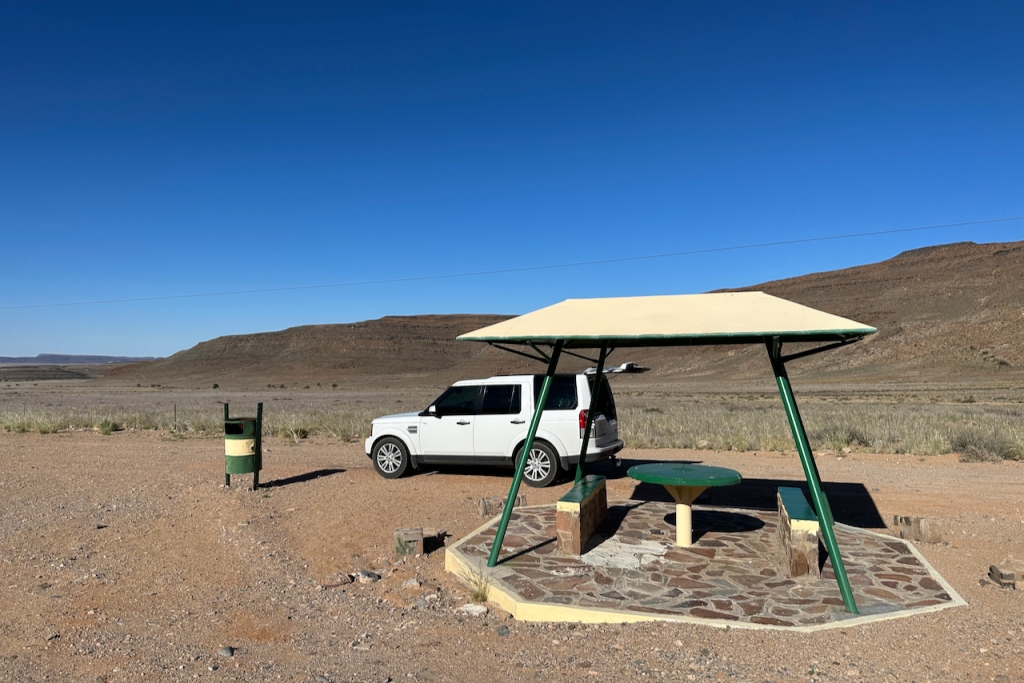
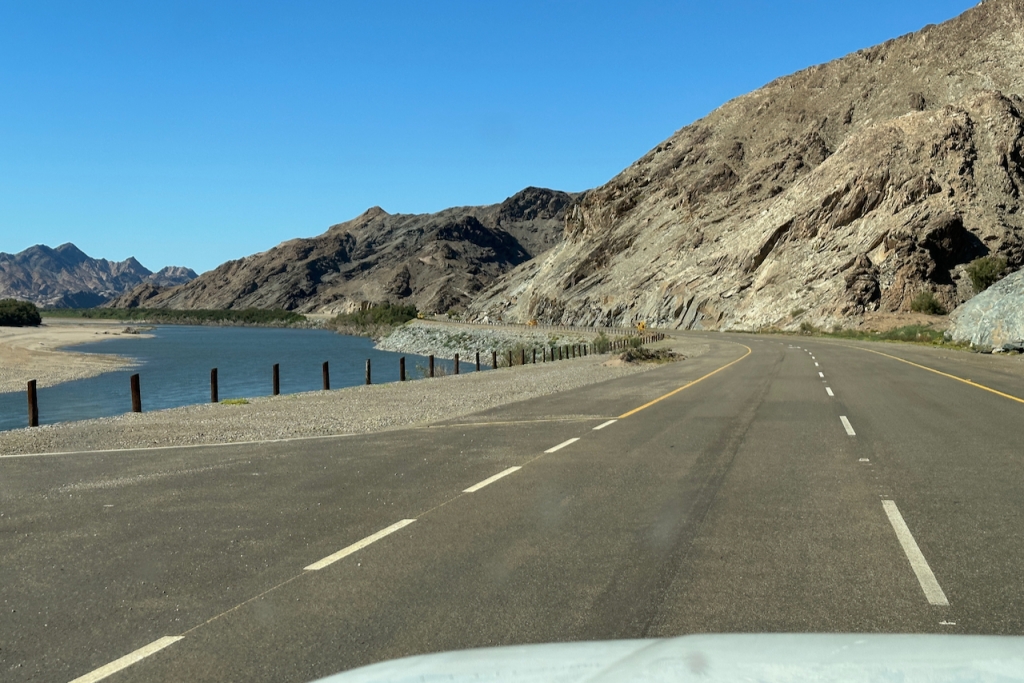
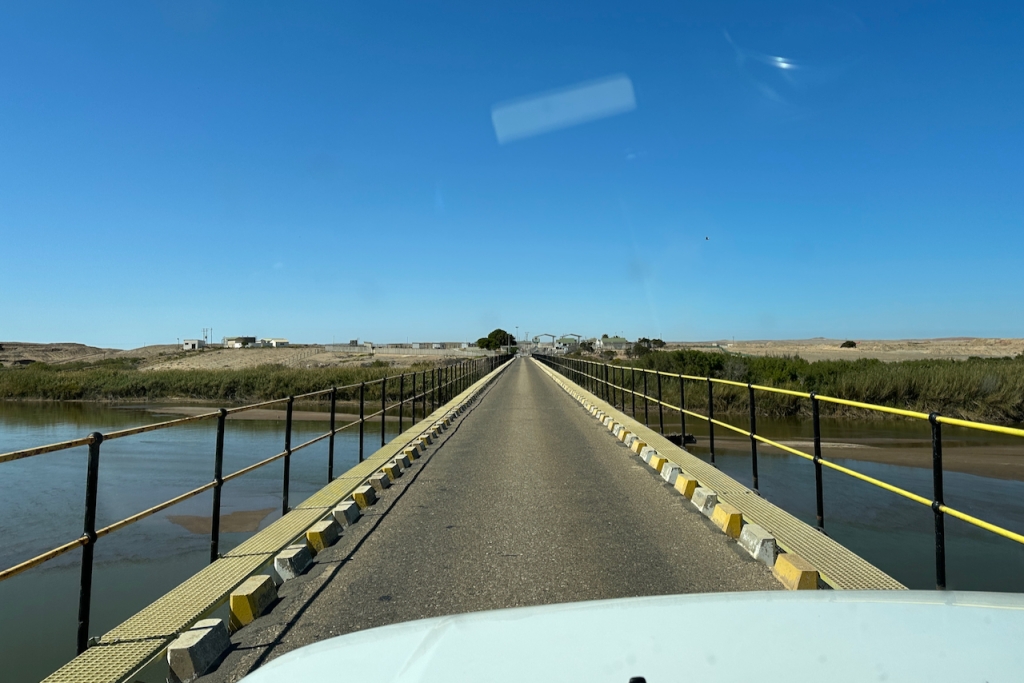
As we approached the Oranje river, we could see South Africa which was on the other side of the river. We arrived at the Namibian border post and cleared out of the country. Then we drove across the narrow bridge and crossed the Oranje river into South Africa. The Alexander Bay border post was a very small setup and there was just one immigration officer present in a tiny office. We presented our passports and the lady behind the counter looked through the passports and noticed that we had been stamped ‘undesirable’ three months ago,
“What is this?” she demanded.
Seathan explained what happened and reassured her the ban had been lifted and that we had the letters from the Minister of Home Affairs to confirm this. She looked doubtful and after a big sigh declared:
“I don’t have the energy for this today.”
We glanced at each other worriedly and crossed our fingers as she went off to take photocopies of our passports. She returned to the desk and informed us she could only give us a seven day visa. What? Seven days? We didn’t understand and asked what the reason was for this.
“You already got 90 days when you entered South Africa in March. You can’t get another 90.”
We told her we didn’t understand and she explained further:
“I’m just doing my job and following my SOP. You need to return to your country of origin if you want to get another 90 days.”
She was not referring to a strict law or regulation but a discretionary ‘Standard Operating Procedure’ that can be used to try and prevent people from border hopping and only spending a day or so in Namibia and then receiving another 90 days. We had heard about this rule but recently several of our cruising friends had flown from Cape Town to Windhoek and back and received another 90 days without any issues. And we were hardly border hopping, having spent three months in Namibia. Ironically, we could have applied for a 90-day visa extension while we were still in South Africa but we didn’t do this as we genuinely wanted to visit Namibia anyway.
We explained that our boat was in Cape Town and that it would be unsafe to sail without first making repairs and doing the necessary maintenance. It was impossible to complete all this work in just a few days. We had planned to replace the rigging, we had to get sail repairs organised etc. We explained that the kids also had school exams scheduled in Cape Town. We explained that we had medical checkups scheduled too. There was nothing we could say to convince this lady. Another family that was waiting in the tiny office and had been observing our unfolding drama suggested we ask for the phone number of the regional immigration supervisor.
Luckily, the immigration lady was willing to provide us the name and number of the supervisor and returned our passports before stamping us into the country. We went outside and called our lawyer. He offered to call the supervisor on our behalf and ten minutes later called us back. He had managed to convince the regional supervisor that we were not trying to trick the system but that we were genuine and honest people who just wanted to spend another three months in South Africa.
While we were on the phone to our lawyer the immigration lady came out of the office and signalled us to come back inside. We hung up and entered the tiny office.
“I will stamp you in for 90 days.” she declared.
Seathan’s jaw dropped and I immediately started thanking her. She was not smiling and Seathan elbowed me to indicate I had to be quiet and not say anything. It was obvious she wasn’t happy with this but she had been to told to do so.
We quietly waited until all four passports were stamped, politely said thank you and goodbye and then ran to the car to tell the kids (who were waiting in the car) the happy news. Customs was not around so there were no further checks and we were free to leave the border post and enter South Africa.
After three months of waiting for this moment, we were ecstatic. Finally, our ordeal was over and we could return home. The emotional rollercoaster of the last three months had ended on a high. And we couldn’t belief this last bit of drama at the border post. We were so lucky we got another 90 days.
All four of us took a huge breath of relief and with a big smile on our faces we called our families to tell them the happy news. Next we called our friends in Cape Town. Everyone had been rooting for us and had been worried about us.
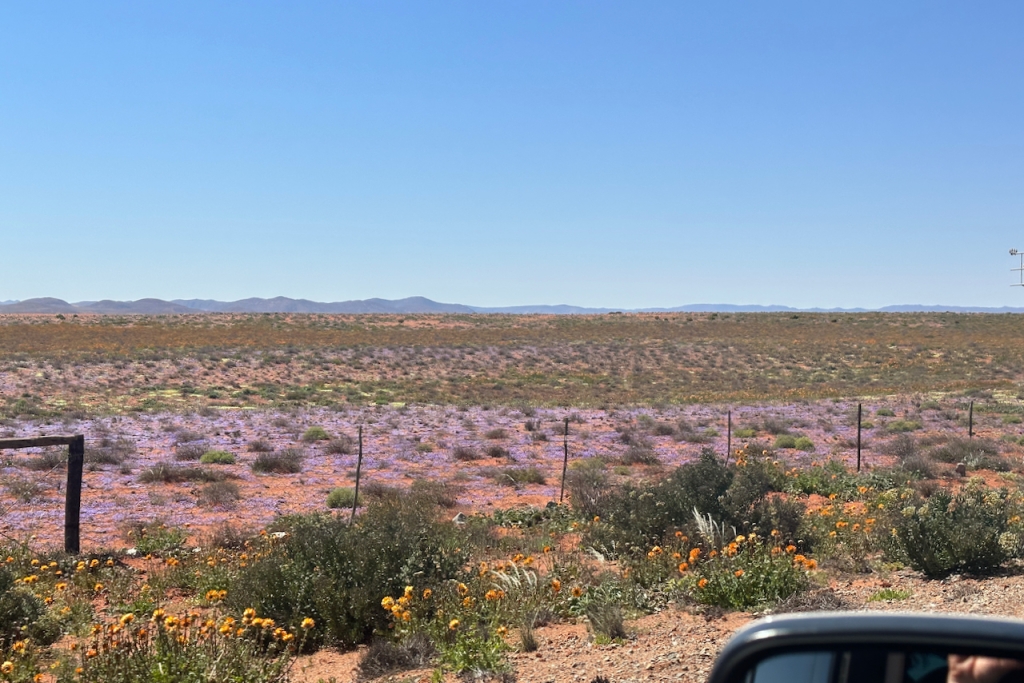
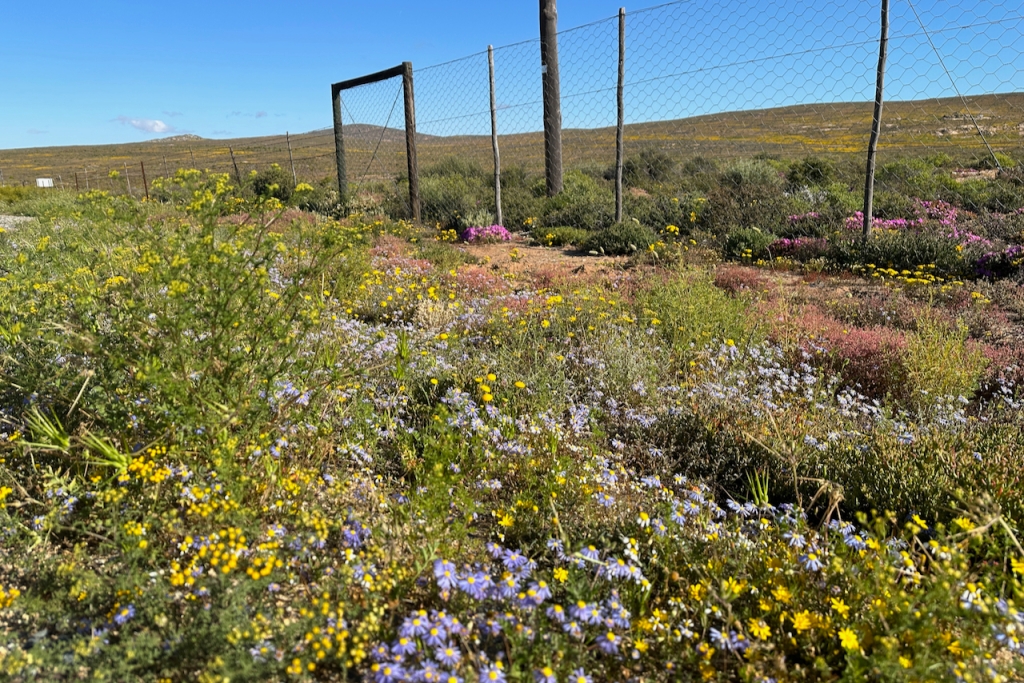

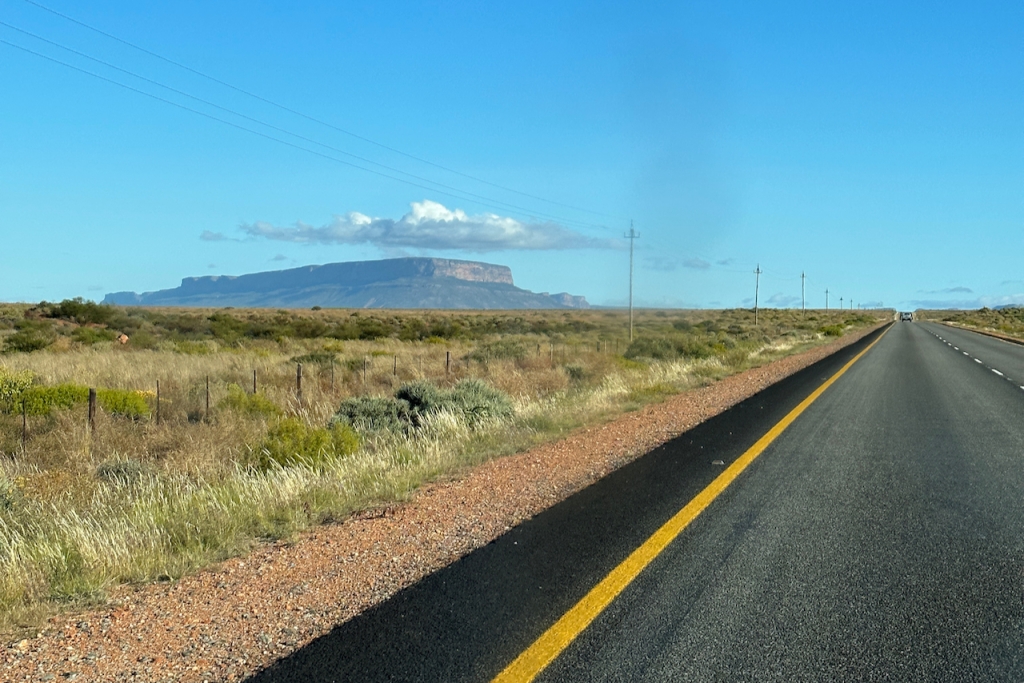
We decided to stop overnight near Cederberg mountains at a lodge called “the Highlander” which was recommended to us by a friend. The owner, Sparky, welcomed us and listened to our story over a few beers.
The next morning we continued our drive to Cape Town and it was around noon when we arrived at the marina. Our friends were all waiting for us and had decorated Rehua with balloons and a huge ‘welcome home’ sign. We were so happy to be home and it never felt better to be stepping onboard.
Our dock buddies had organised a welcome home party in the evening to celebrate our return and we felt lucky to have so many caring friends. That night, we had the best sleep ever, in our own beds.
The next few days we happily adjusted back to marina life. Being home onboard Rehua never felt better.

And that was the end of our Namibian adventure.
Before you go, make sure to check out this short video Aeneas made of our Namibia trip (YouTube Link: https://youtu.be/Lc8fHzXK7jo?si=CZn_vSTg15Bhk8rE)
I don’t think I have ever read a book, story, article, letter, anything and said “OH MY GOD” so many times – literally every paragraph! Jesus guys, I know you have so so many stories and tales from all your travels, but this one….well it’s a different league. Audrie – a publishing contract beckons! So glad you are all ok and haven’t combusted with stress, enjoy being back on board, home… and thank you for a very very engrossing read on a quiet Wednesday in September. Much love, Lucy x
Thanks Lucy! Glad you enjoyed the read 🙂
We are SO happy to be back onboard. XXX
Hello ,Pity we did not meet while you guys were in Luderitz. Strange that somebody at the yahtclub did mention us. I am the custodian of the Seven Seas Ldz Project based in Luderitz. Glad all worked out for you guys. Not the first time we encountered similar stories. However, we do have a network of people that specialize in immigration and which can assist as it can become etremely stressfull and expensive very qiuckly.
Fair winds.
Gm Du Toit
Dag Audrie, Met spanning en geintrigeerd heb ik je post over Namibië gelezen. Wat een avontuur owv enkele uren over tijd op een reispas en de rigiditeit van ambtenaren. Maar dit avontuur getuigt ook van de enorme veerkracht die jullie hebben. Na bekomen te zijn van de schok en teleurstelling, hadden jullie direct een plan B. De 3 dagen werden 3 weken en uiteindelijk 3 maanden maar jullie hebben deze tijd doorgebracht met fantastische uitstappen doorheen een prachtig land met een gevarieerd landschap, sportieve uitdagingen voor de jongens…. Wat ook opvalt is dat jullie overal contacten hebben, en dat jullie kunnen rekenen op een geweldige vriendenkring die elkaar helpt door dik en dun.
Wij hebben net ons MTB-WE met het Sycod achter de rug. Deze keer in de Vlaamse Ardennen, maar daar ook genoeg hoogtemeters en prachtige natuur voor mooie feitstochten. Nu vrijdag vertrekken we terug naar Calahonda (bij Marbella) om daar te overwinteren. Intussen hebben we de keuken en badkmamer verbouwd om het comfort van hier aan zee te hebben, en hebben we via de golf een Belgische groep leren kennen die regelmatig speelt. Geleidelijk aan wordt het sociaal leven wat uitgebreider.
Hoe gaat het verder met jullie? Blijven jullie nog lang in Zuid Afrika, of zijn er plannen om terug te keren of toch nog verder te zeilen…..? De oudste zal bijna 18 jaar zijn zeker en plannen willen maken voor verdere studies….. of blijven jullie verder gaan met thuis-studies….? Hoe langer dit avontuur duurt, hoe moeilijker het ook wordt om terug te keren naar het gewone leven, met een job van “9 to 5” ….. dus zo lang het kan en iedereen happy is met dit avontuur, geniet er verder van.
Dikke knuffels en veel groeten aan Seathan. Liefs, Sigrid
ARRRRGGGHHHH what a frustrating story. Yet you got to see such beautiful places. Beautiful video. I have always wanted to paraglide the sand dunes in Namibia. Enjoy the rest of SA and can’t wait to hear the next adventure of sailing the Atlantic. We are going to sail up to Eastern Fiji in 24.
Fair winds
Saxby
As a new reader to your blog. I am struck by quite a few thing as we have an own wee adventure in Namibia…..
Your stoic ‘can do’ attitude to your situation
Wow! What a story. One for the grandchildren ..
You write beautifully xxx
Ps can’t wait to get back to Cape Town and spend time with you all and hear more of your adventures
All our love
Lucy and John
Broadsword (but currently in a tent in Namibia!) ❤️❤️❤️
Thanks Lucy 🥰 Have an awesome time in Namibia and can’t wait to have a proper catch up when you guys are back in Cape Town ! Xx